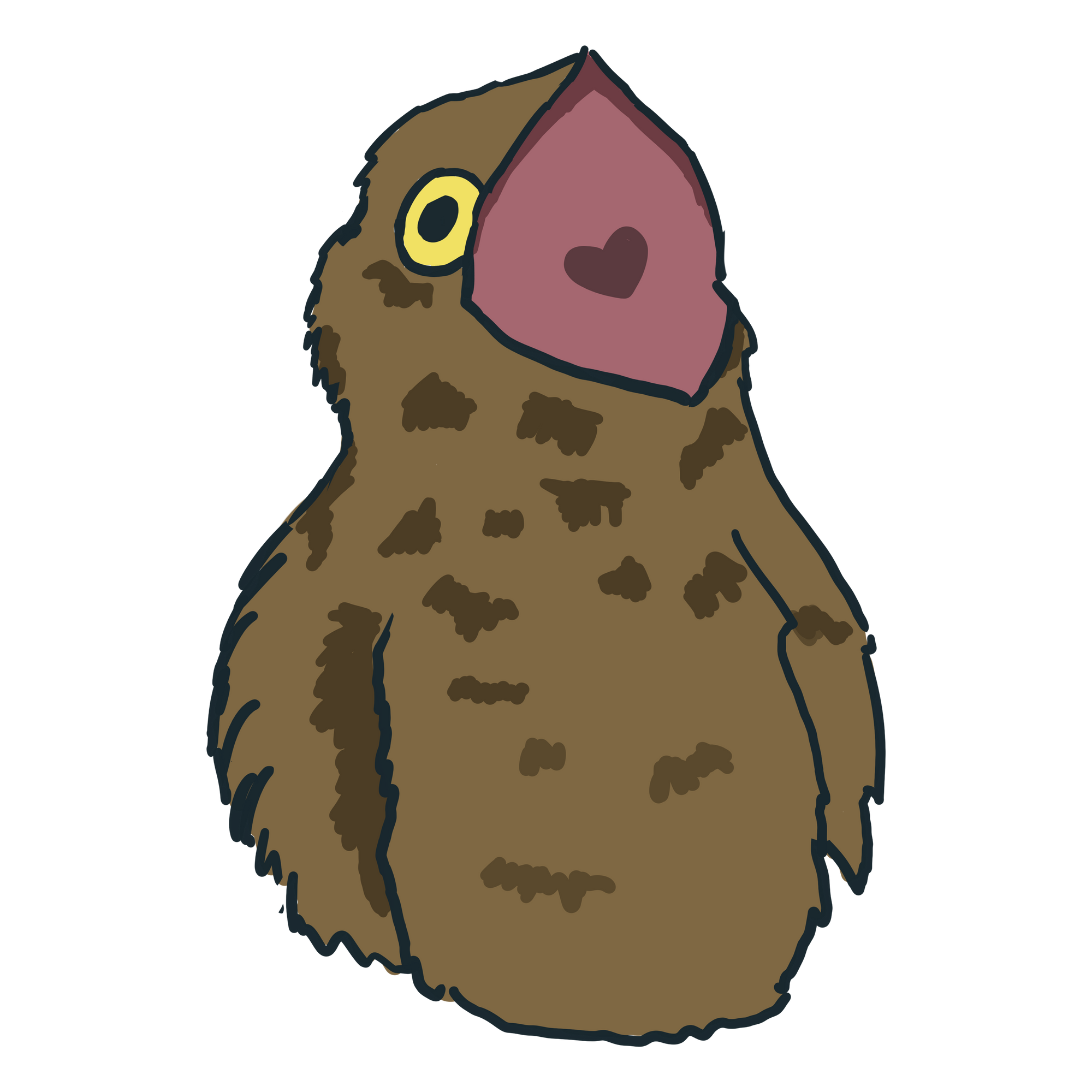Seafari
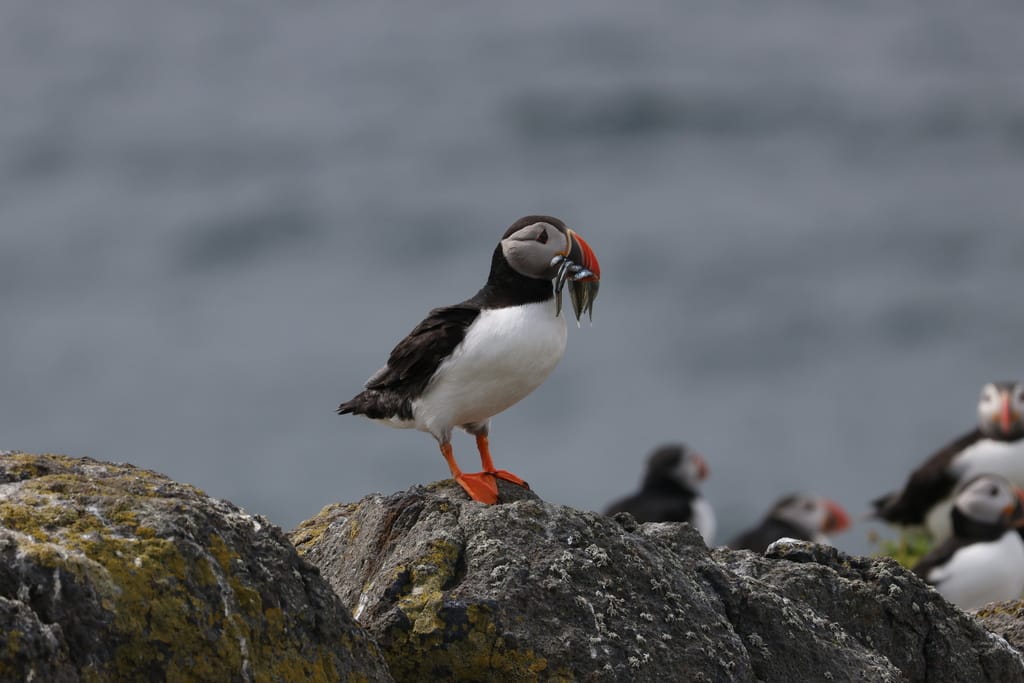
Boat trips from mainland of Scotland to remote isles offer the opportunity to traipse around bustling cosmopolises of avian life. In the summer months, puffins, guillemots, terns, Gannets come to the rocky islands off Scottish coasts to breed. Arctic Terns can come all the way from Antartica, and Gannets arriving from Africa. Puffins and kittiwakes spend months outside summer at sea. Gulls generally maintain permanent residence throughout the year. Outside of these summer-ish months, many of the birds move elsewhere, leaving ill-mannered thug-like gulls with permanent residence to torment one another.
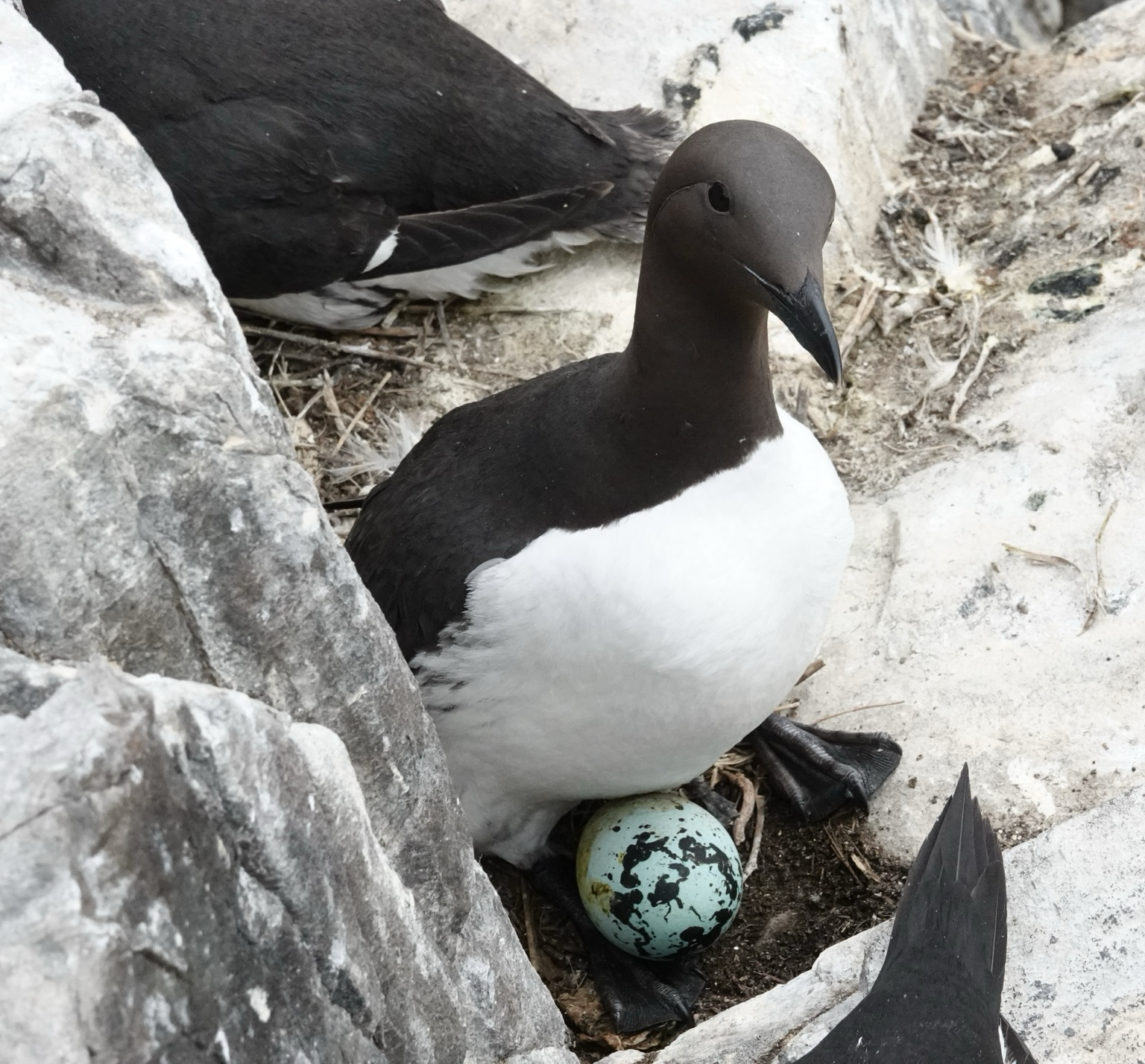
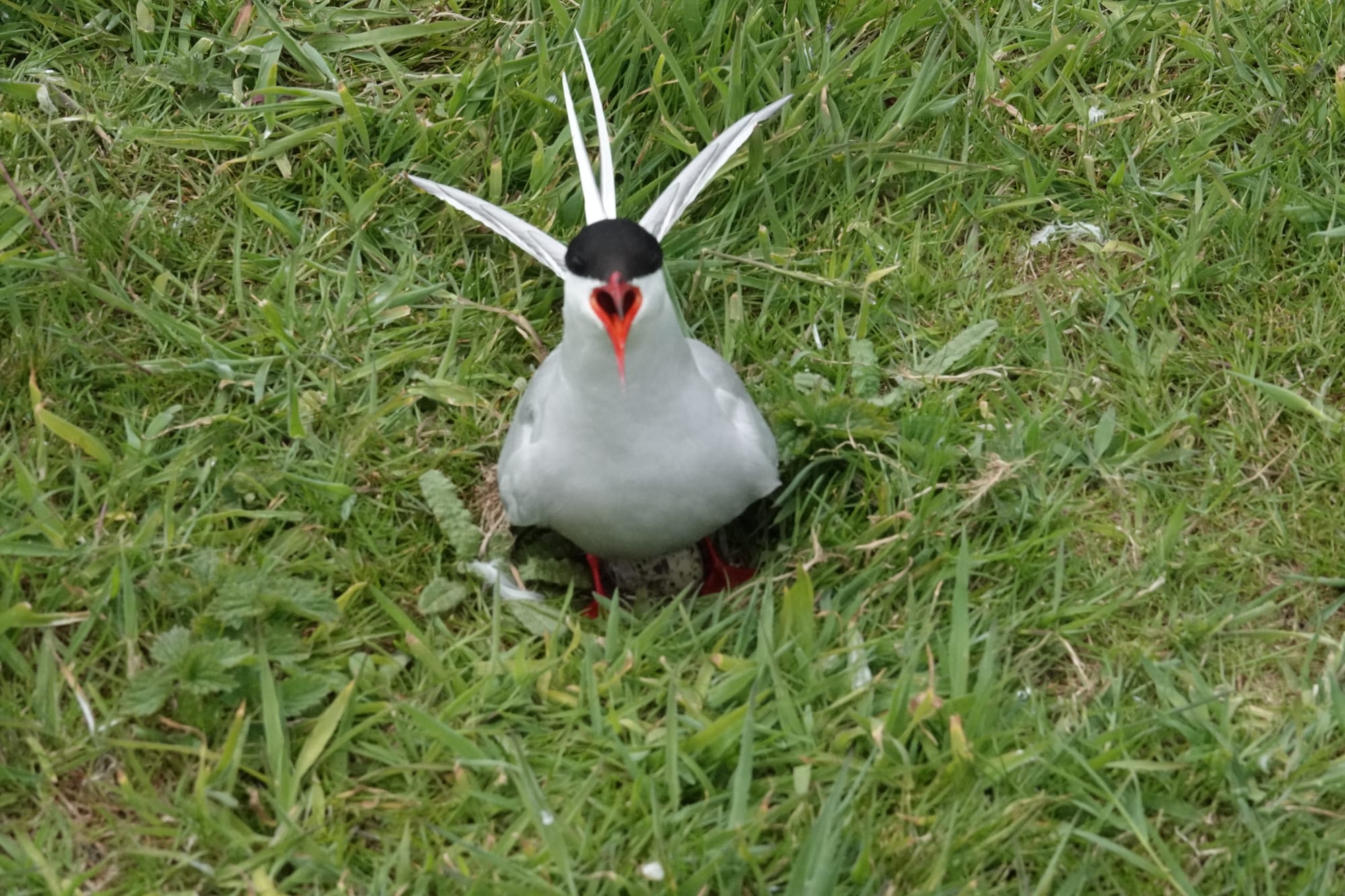
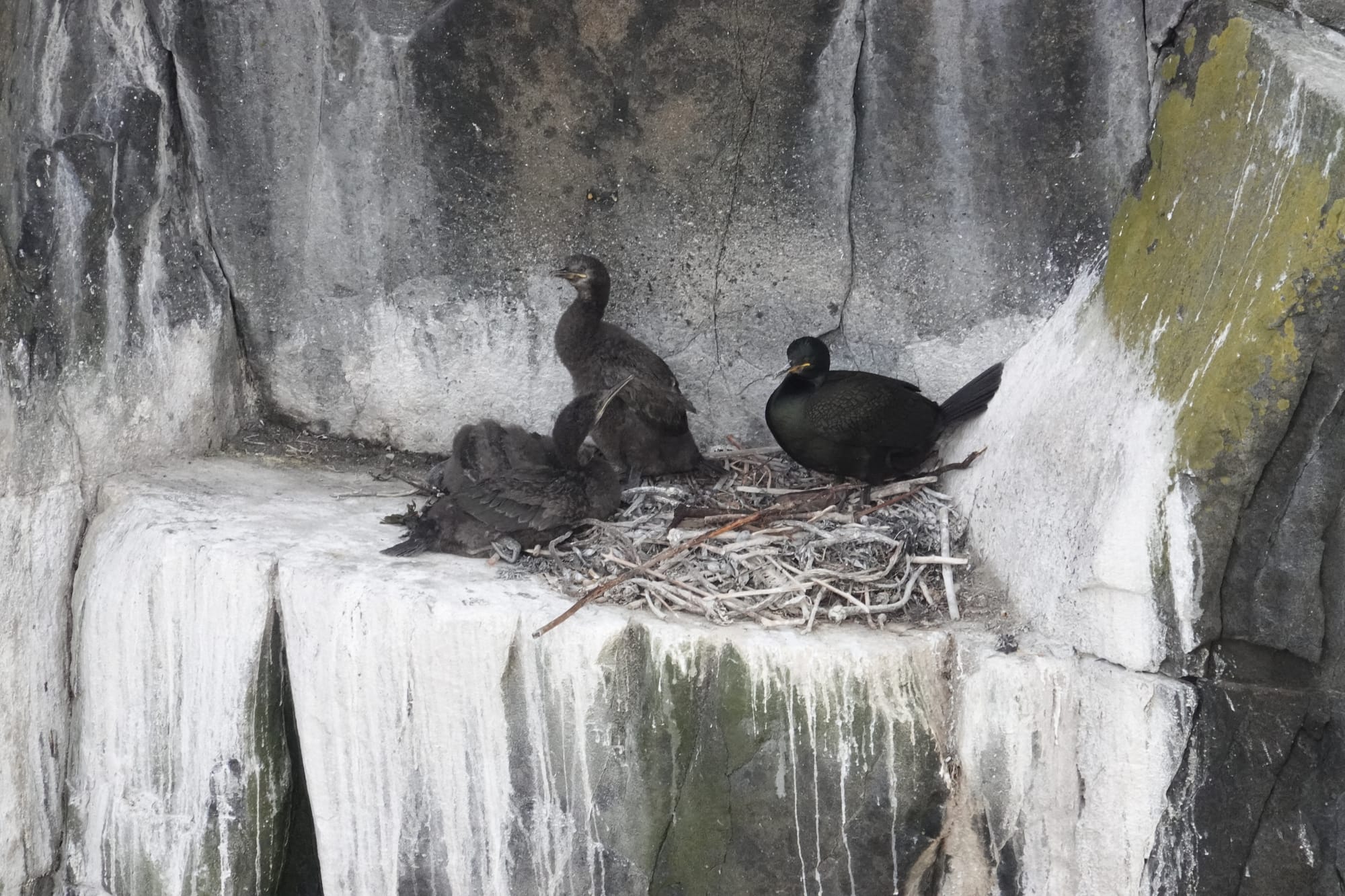
Murres, terns, shags nesting
Sometimes, during the boat trips, you might have dolphin, whales and even orca encounters.
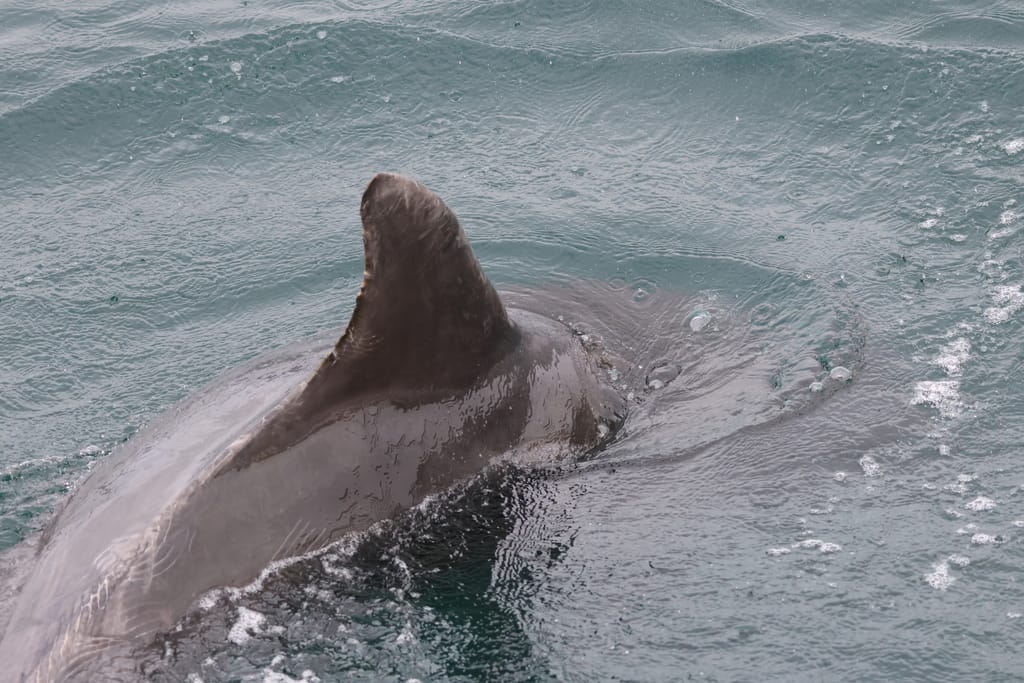

Bottle nose dolphins are common along the ferry to Trennish Isles
Nesting real estate is in high demand and tight supply in the summer months. Gannets, Razorbills and kittiwakes find themselves packed wing-to-wing on prime oceanfront real estate due to the sheer volume of seabirds. Murres, Razerbills, gannets, and gulls sit calmly cliff ledges stuffed with bits of dried up mounds of grass and guano, totally unperturbed by the ferocious wind. I am impressed by how they managed to so effortlessly and firmly lodge themselves in their nests in these strong coastal winds.
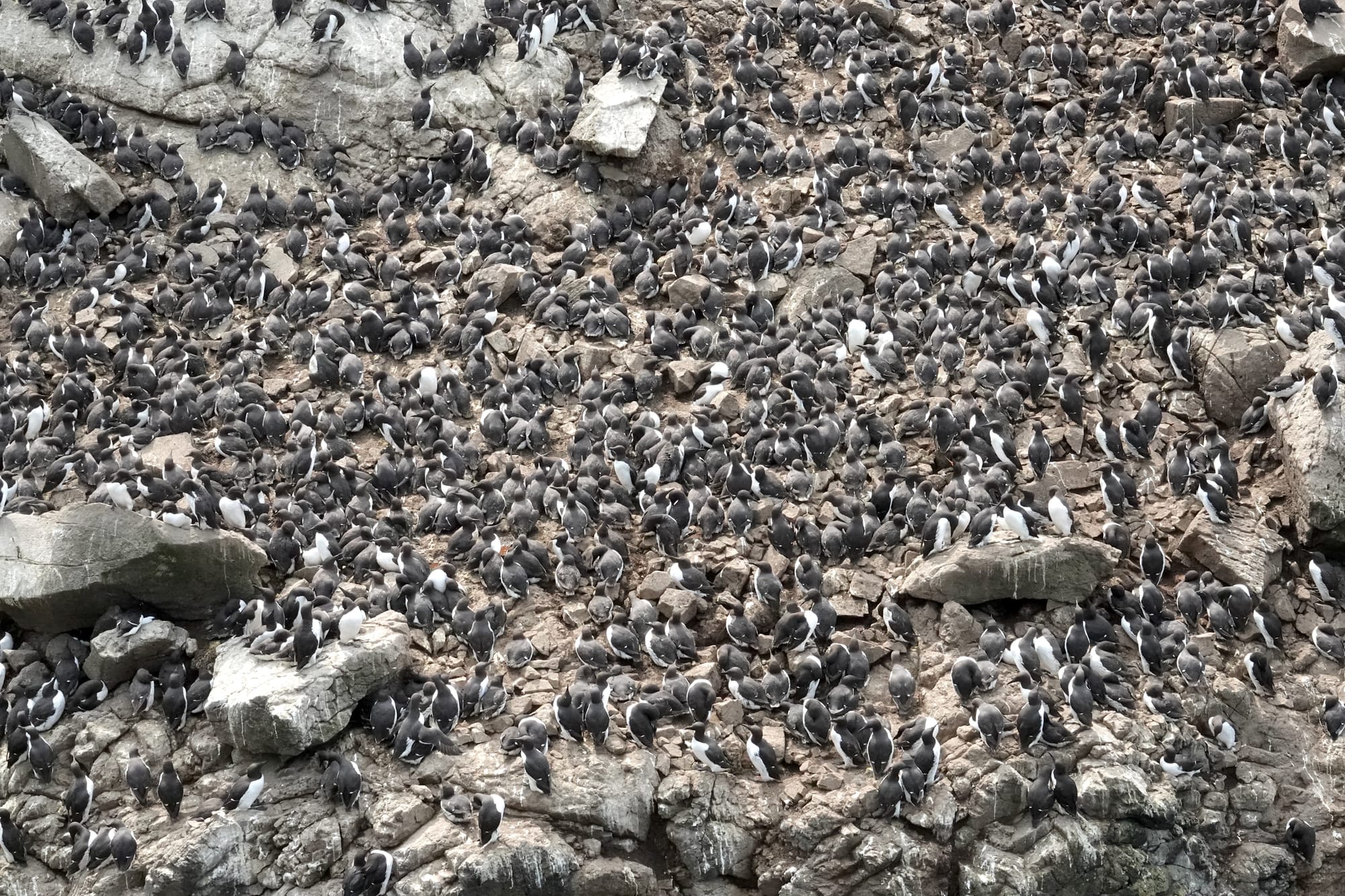
With their feet and beak, puffin dig burrows under the soil covered with grass flowers. Hearsay that some puffins do use rabbit burrows for a month for nesting. Human visitors are advised to stick to mark trails and do not step on soil above the fragile Puffin burrows as the earth can collapse and injure the young puffling n5estled in the burrow.
Their sewage system is rather manual though.
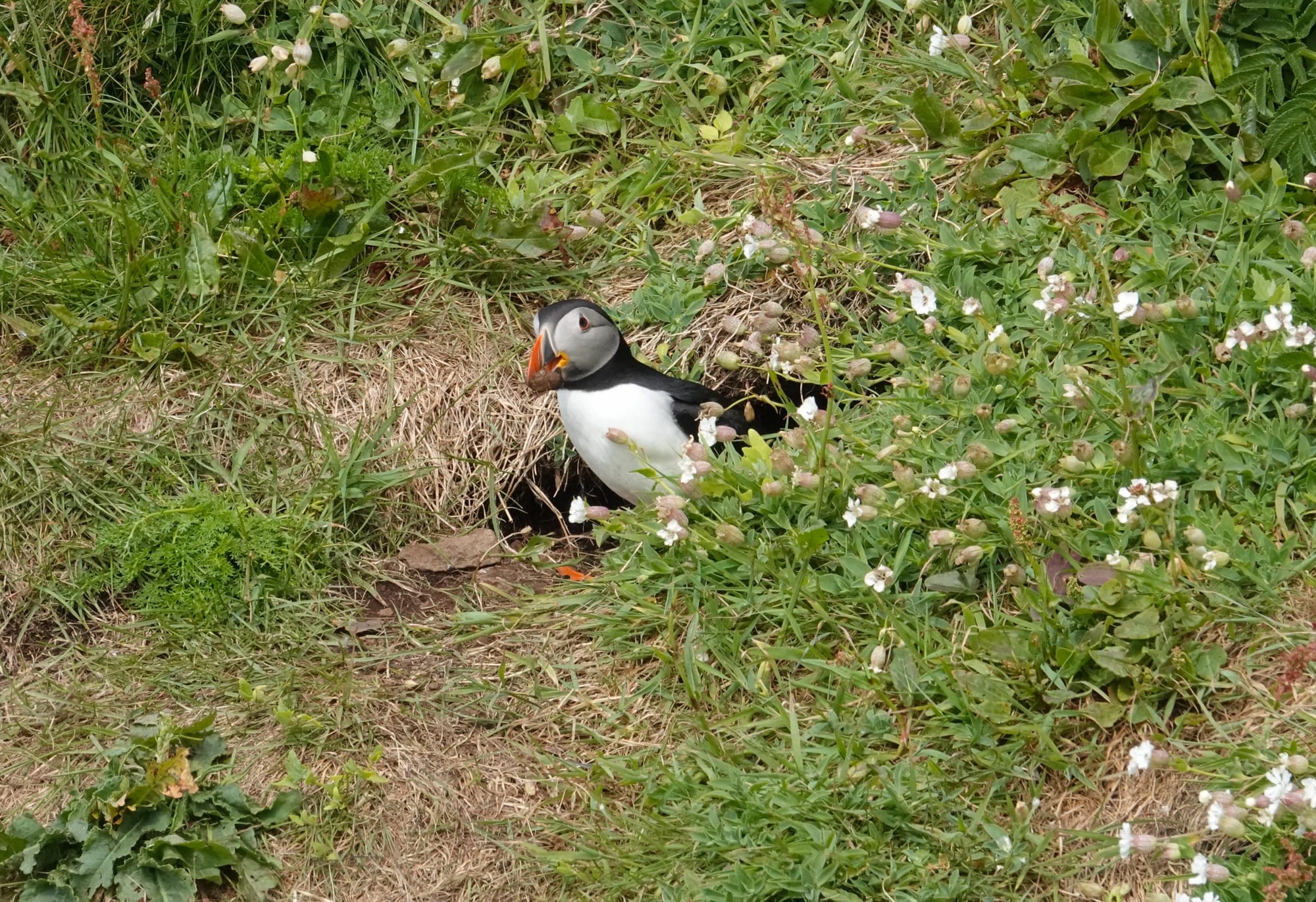
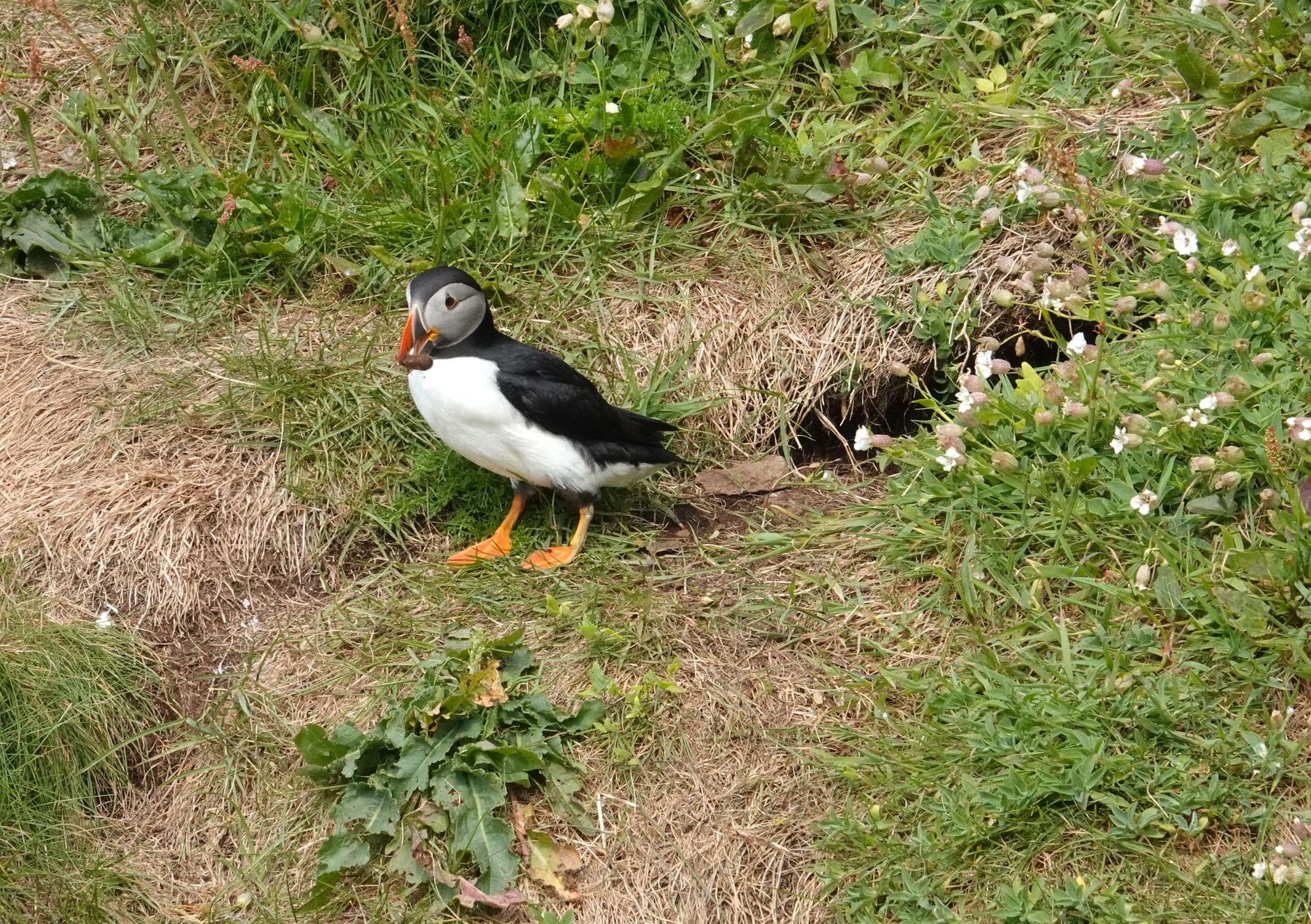
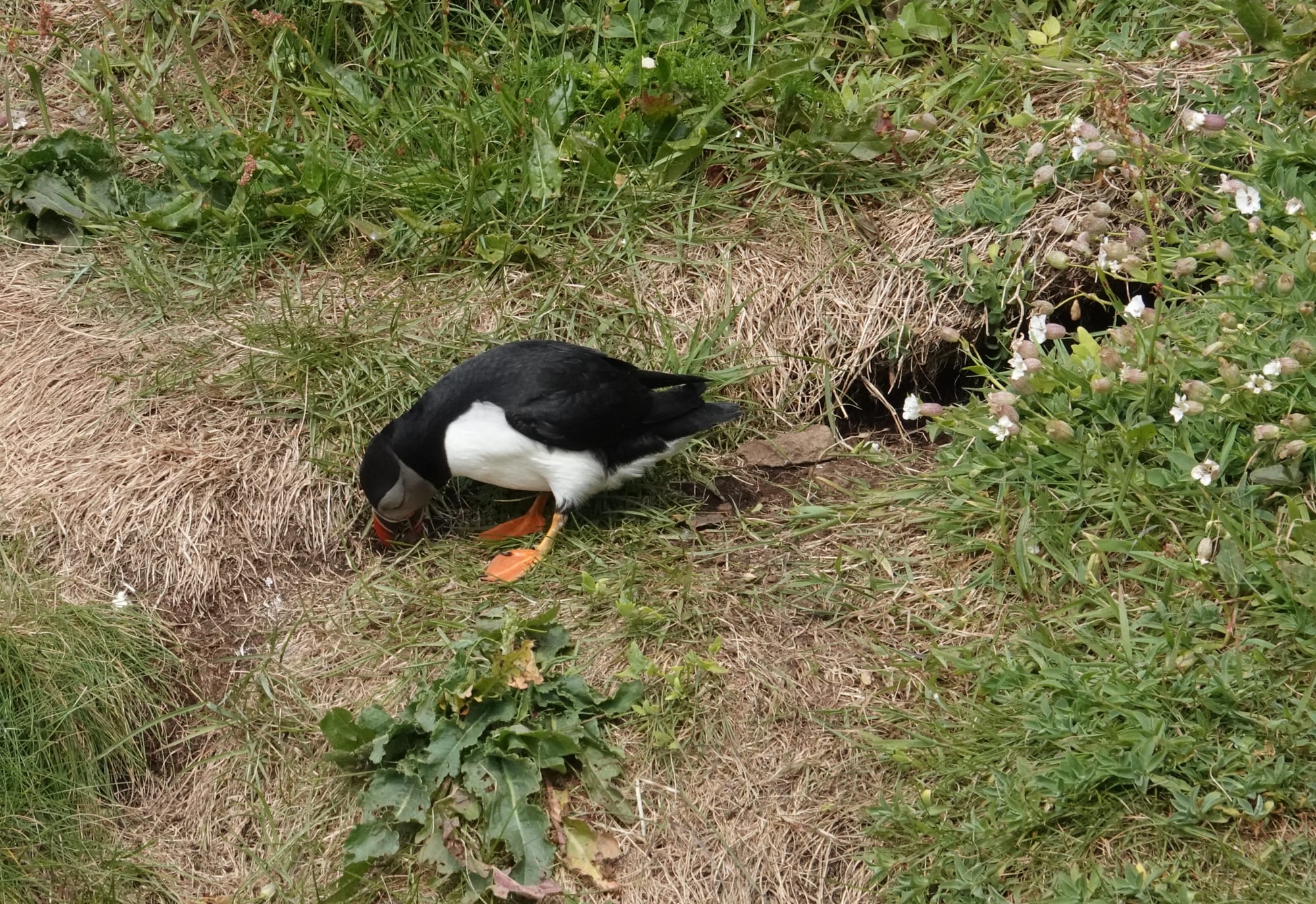
taking out the poop
How to spend 4 days seeing 9230930302390 birds
You would want to visit the Scottish seabirds in late May to mid August, which is the seasons for puffins, which was what everyone is most excited to see. Their clown makeup and beakful of fish. They way they crashland sometimes. Waddling in and out of burrows.
During you trip, you should strongly consider a washable wide-brimmed hat unless you don't mind bird poop on ur face and scalp. Also, bring good shoes with sole grip as some shores might be mossy and slippery.
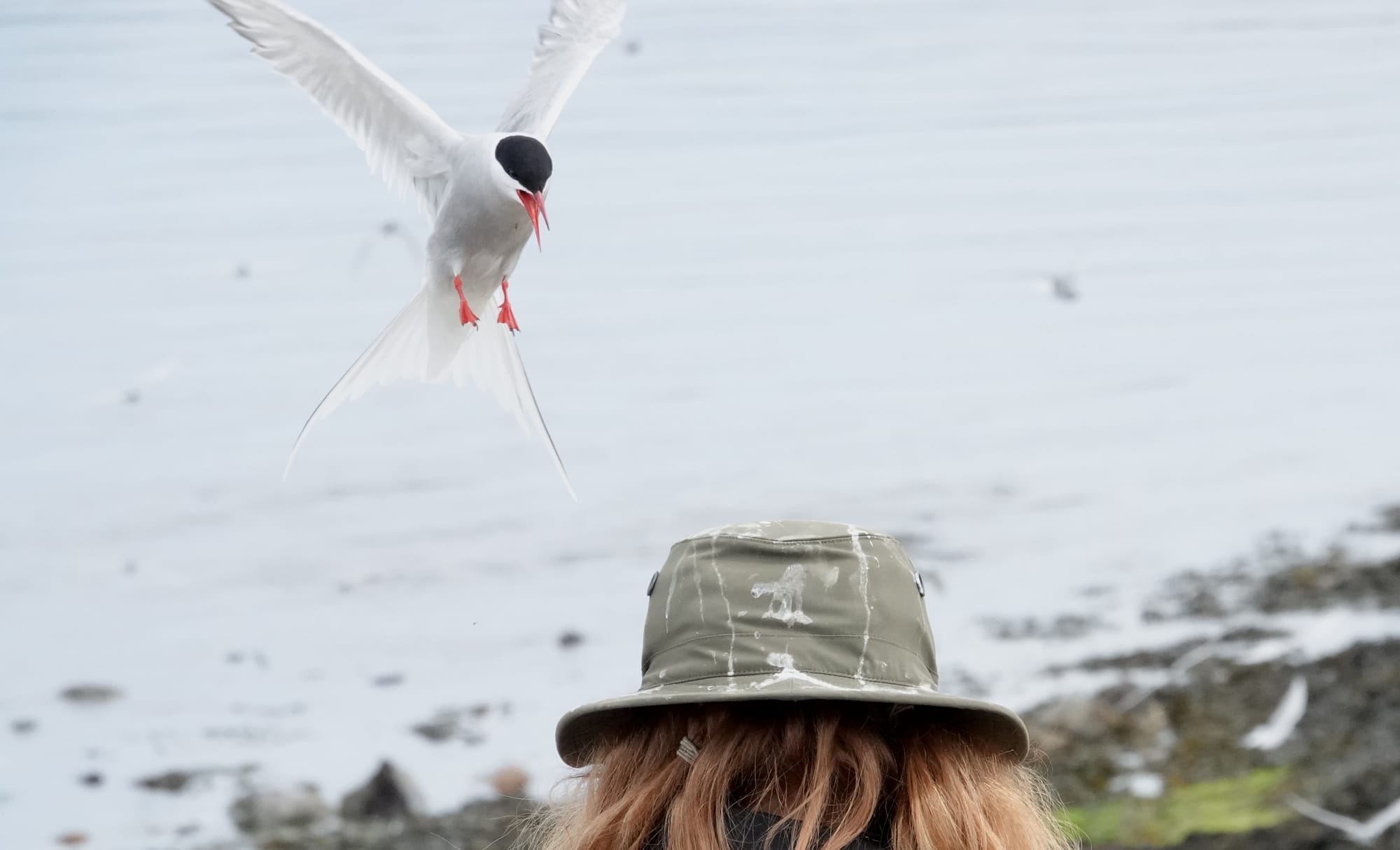
Isle of May, Maximum puffins
We planned visits several seabird towns during our Scotland trip. One of the best puffin visits we had was Isle of May, and it was the most impressive for the volume of seabirds. Isle of May hosts one of the largest puffin colonies in the UK. Scientists estimate 100,000 puffins on the island as there were 52, 000 occupied burrows.
it even resembles a bird tornado as they take off and land in a flurry of activity. The sheer volume of birds is a sight to behold, dwarfing the urban pigeons that we often see in our cities.
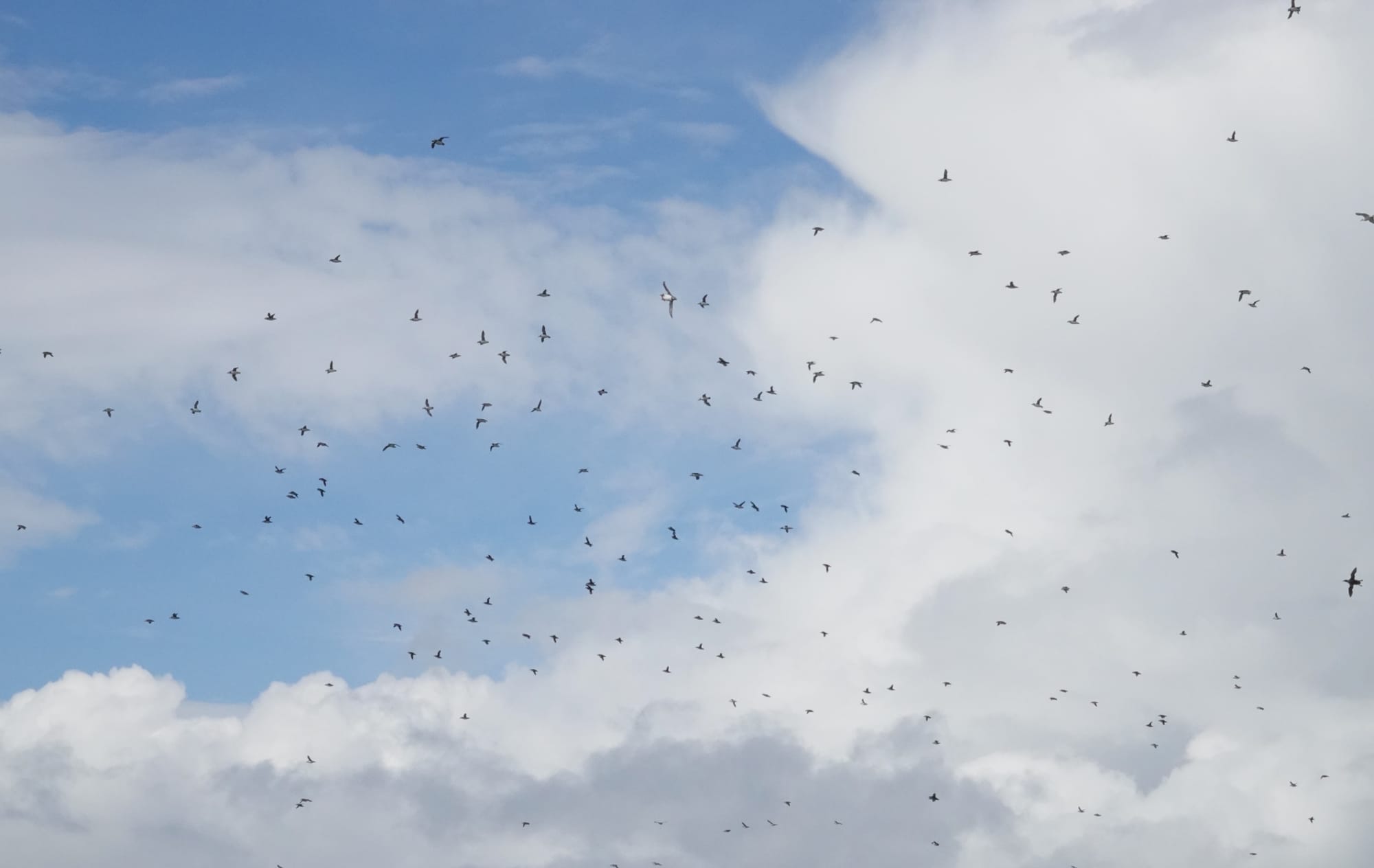
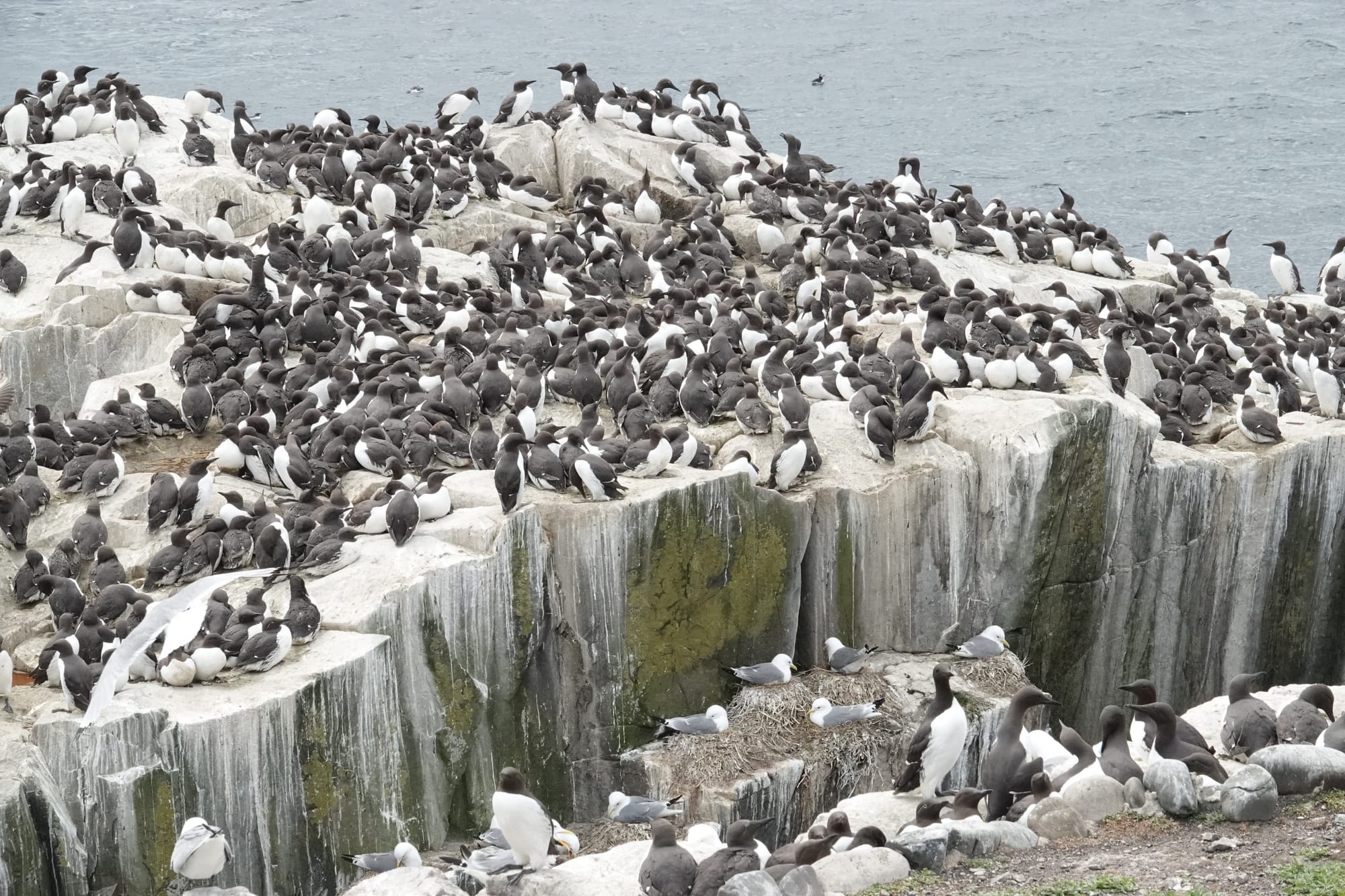
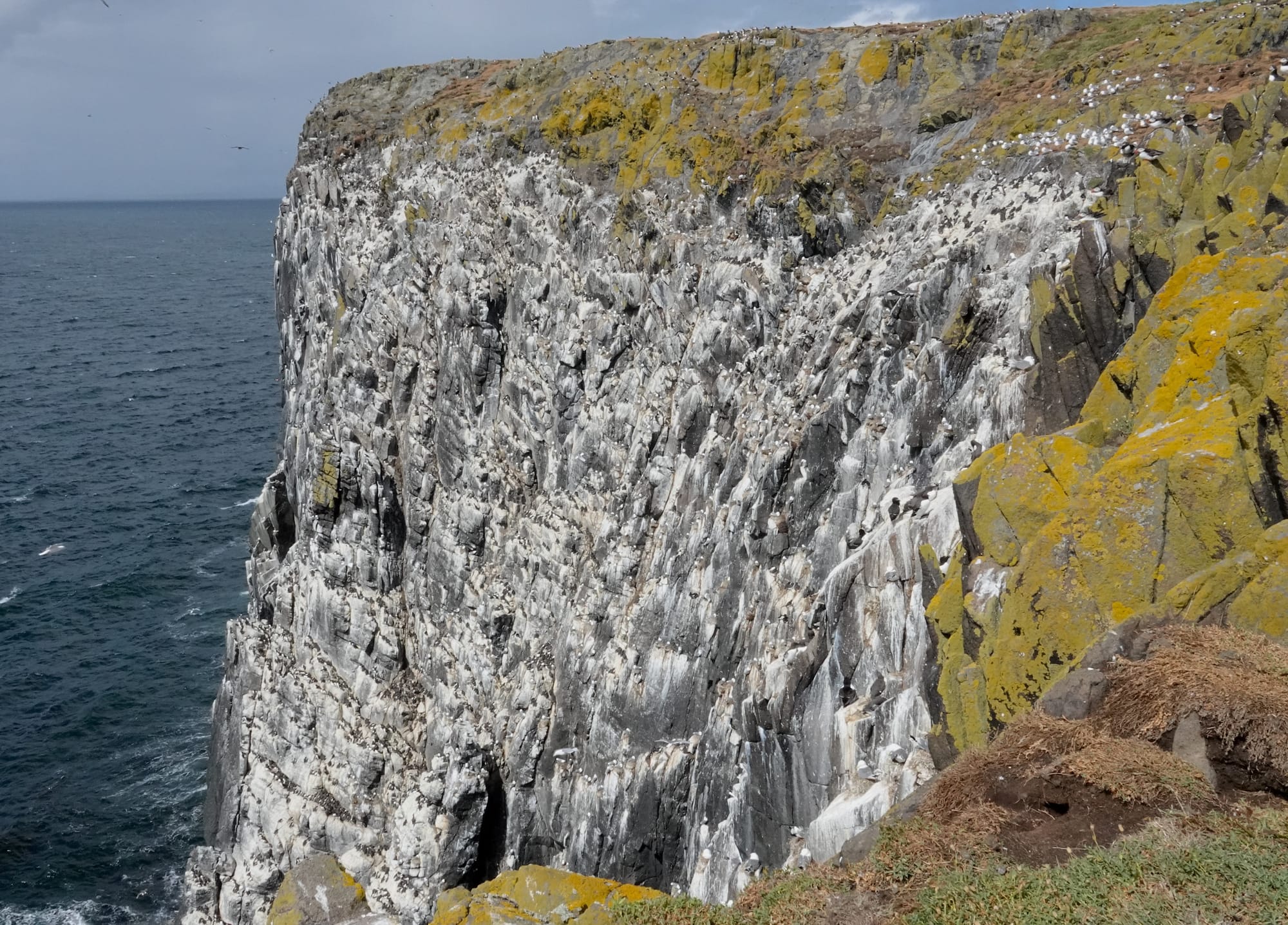
intense bird numbers
How to get to Isle of May
There are two ways to get to the Isle of May. The first is to take a 33-minute train ride from Edinburgh to North Berwick and then join a boat tour with Scottish Seabird Centre. The centre is walking distance from the North Berwic train station. The boat trip is on a rigid inflatable boat. The boat speed is higher but it would be too bumpy and unsafe for who are pregnant, have back problems or children.
We went for the second option because we booked late and the boat trip from Seabird center was full. The second option is to go to Anstruther and take a small ferry to the isle with Anstruther Pleasure Cruises. The boat is slower and has two floors. This should be more comfortable. This one is not as easy to get to on public transport (buses and trains). That will take around 2 – 2.5 hours. We drove for 1.5hr to get to Anstruther. One Northern Gannet was flying closely above our boat on the way to Isle of May.
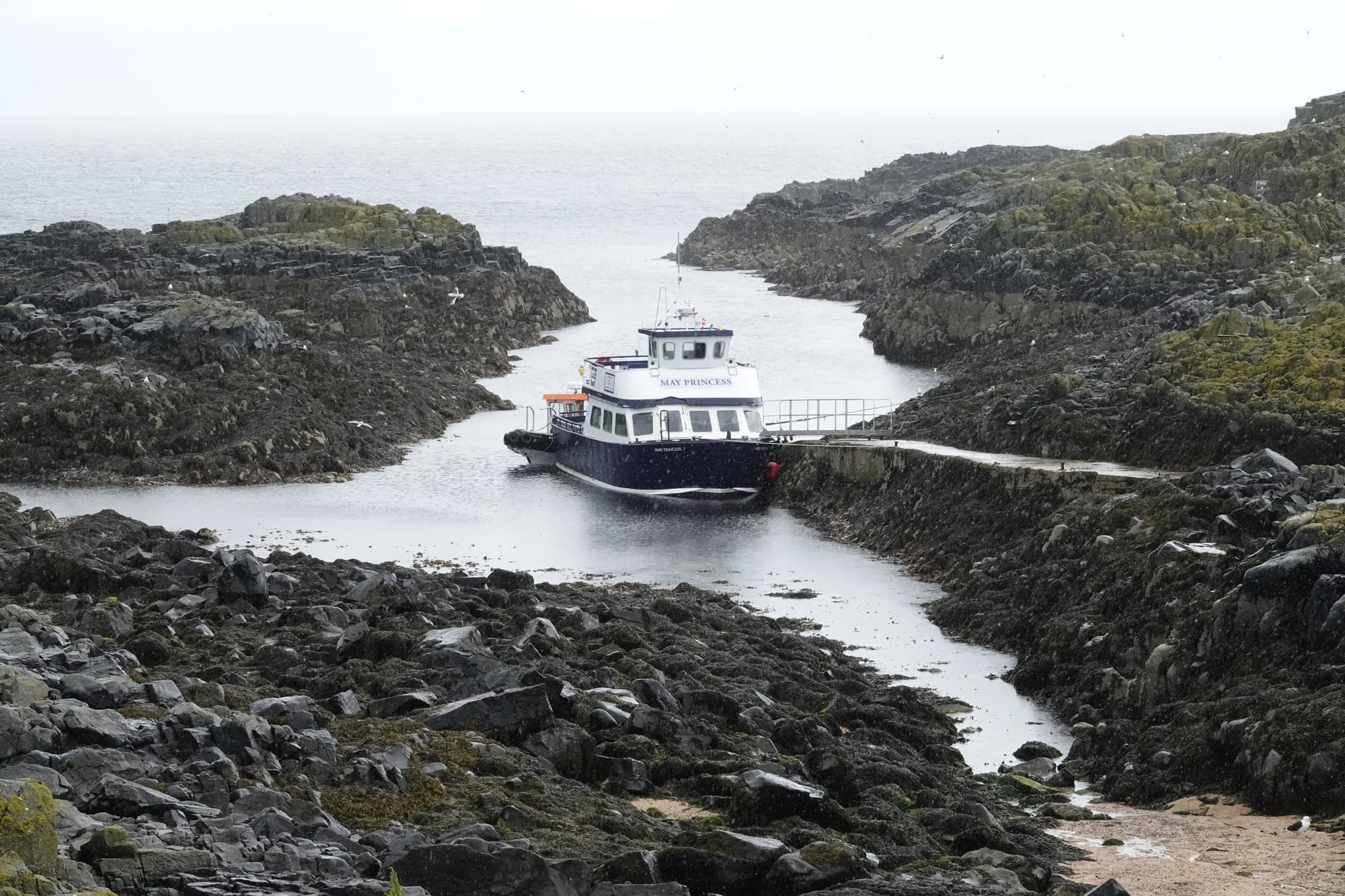
Isle of May Landing trip exploration
I highly recommend to land on Isle of May as you get to see the birds up close and also the scenic landscapes on the island. With stretches of flower bushes dotted with seabirds and sea stacks with swirling masses of seabirds in the backdrop, one can't help but feel a sense of wonder at the unique scenes on the Isle of May. Walking along the trails with puffins zipping past overhead with a beakful of fish never gets old. Along the trail, you would likely encounter gulls screaming at each other for seemingly no good reason. There is never a dull or birdless moment on this island.
Isle of May was bigger than Lunga and Farne Islands and had a greater variety of walking trails. The large clusters soft pink flowers that covered the lands made for a very dream-like atmosphere. The puffins had burrows amongst the flowers and puffins bobbing amongst flower bushes produced many aesthetic puffin photos.
Look out for puffins with fish in their mouth.
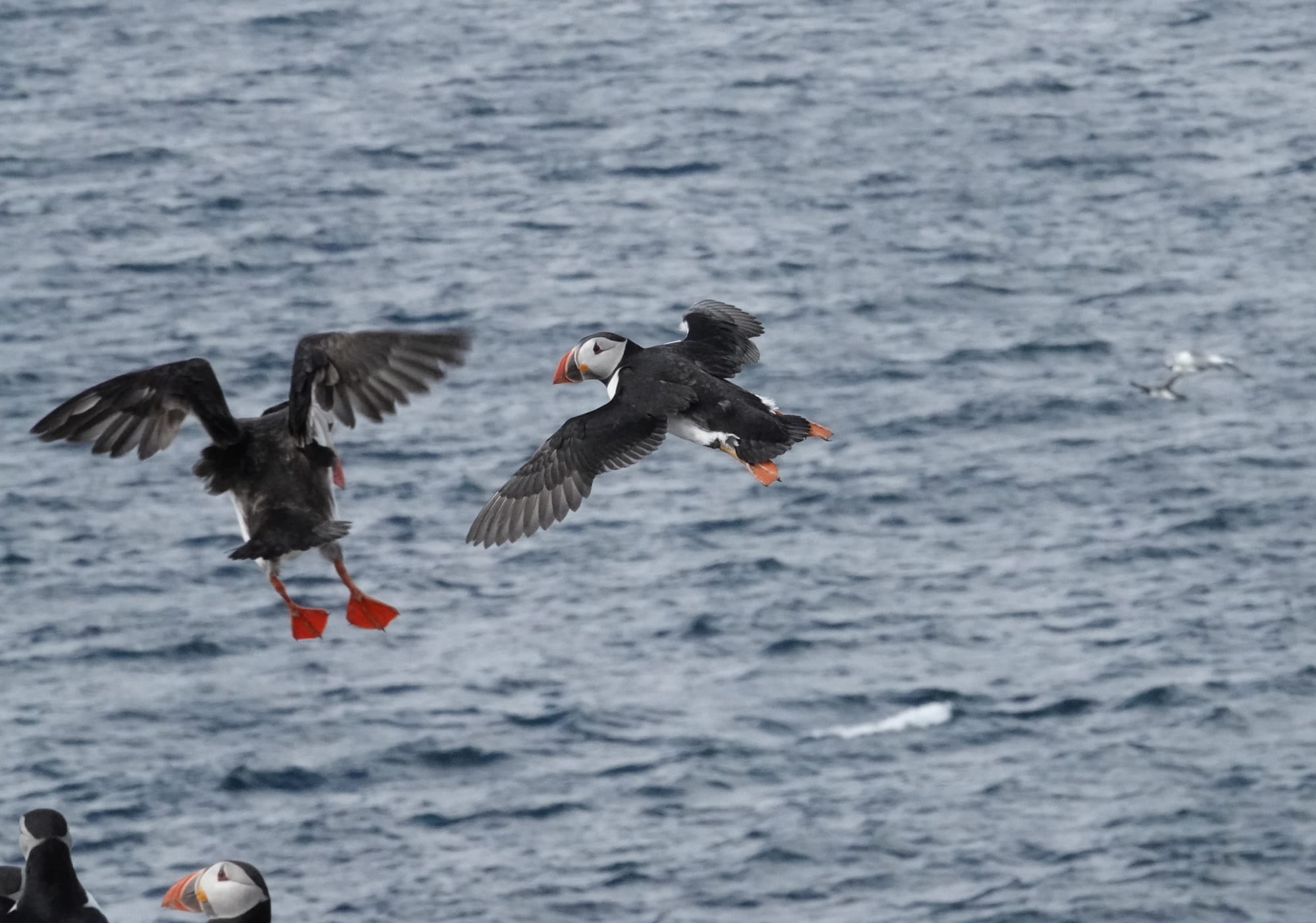
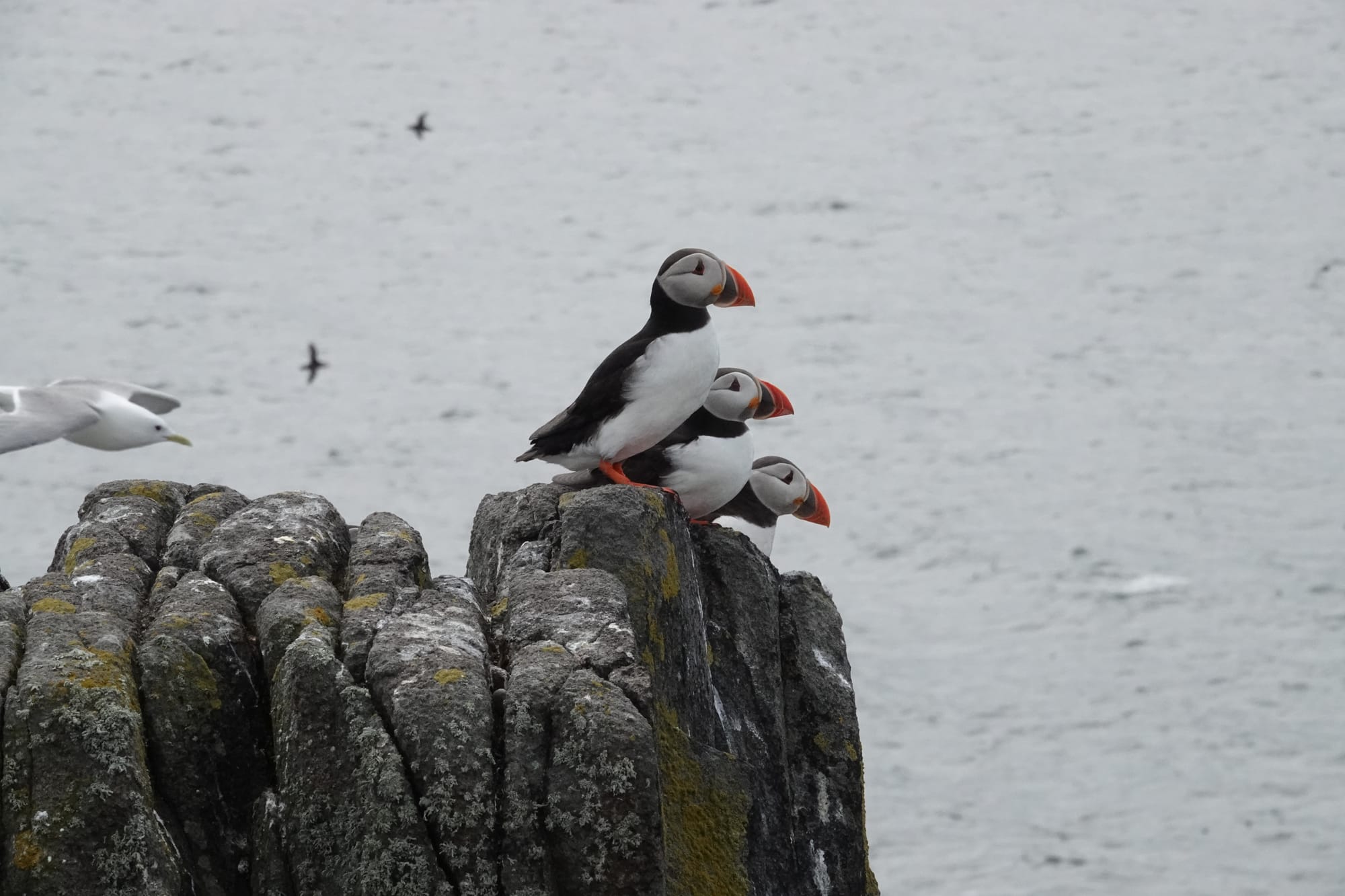
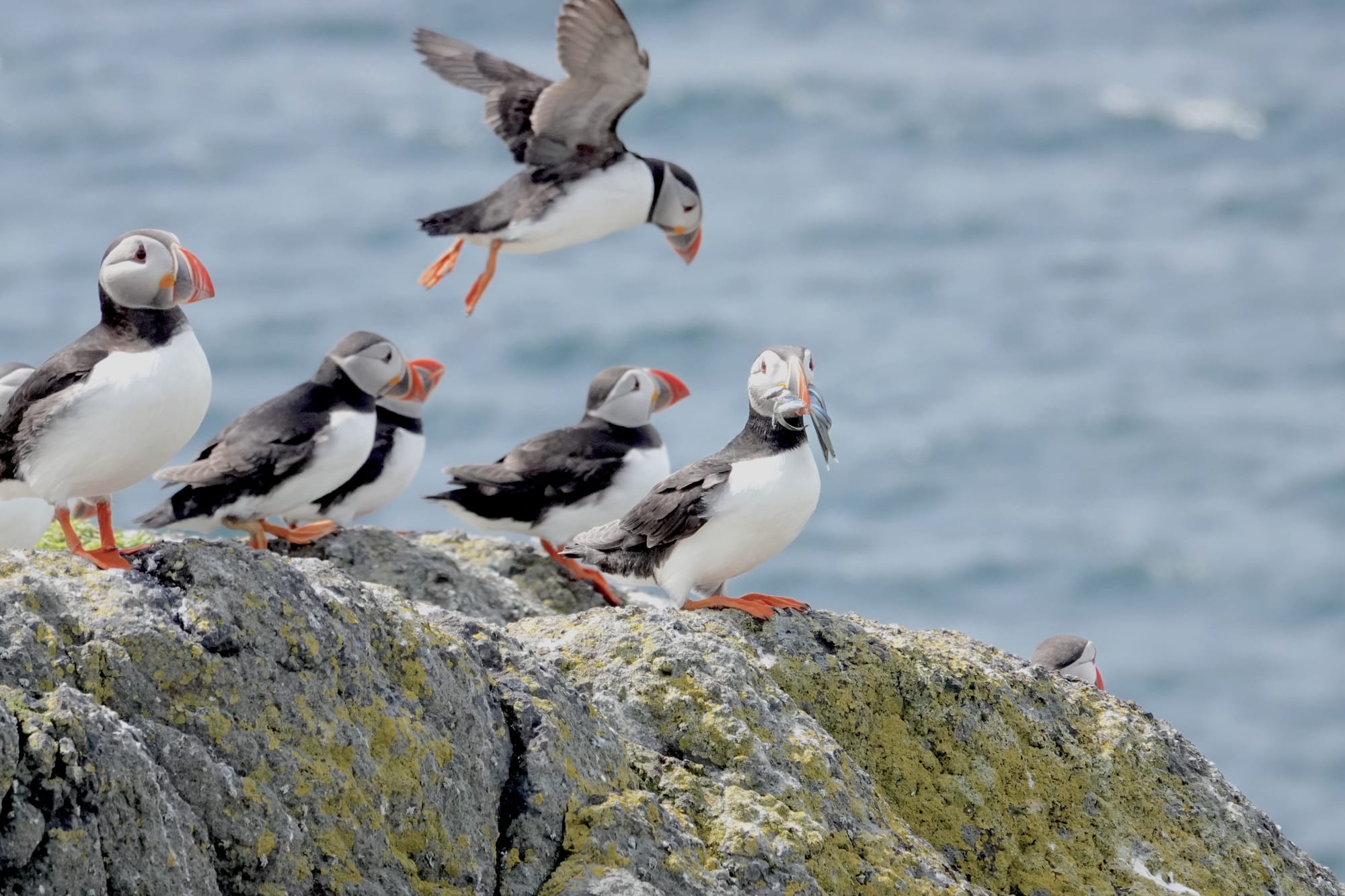
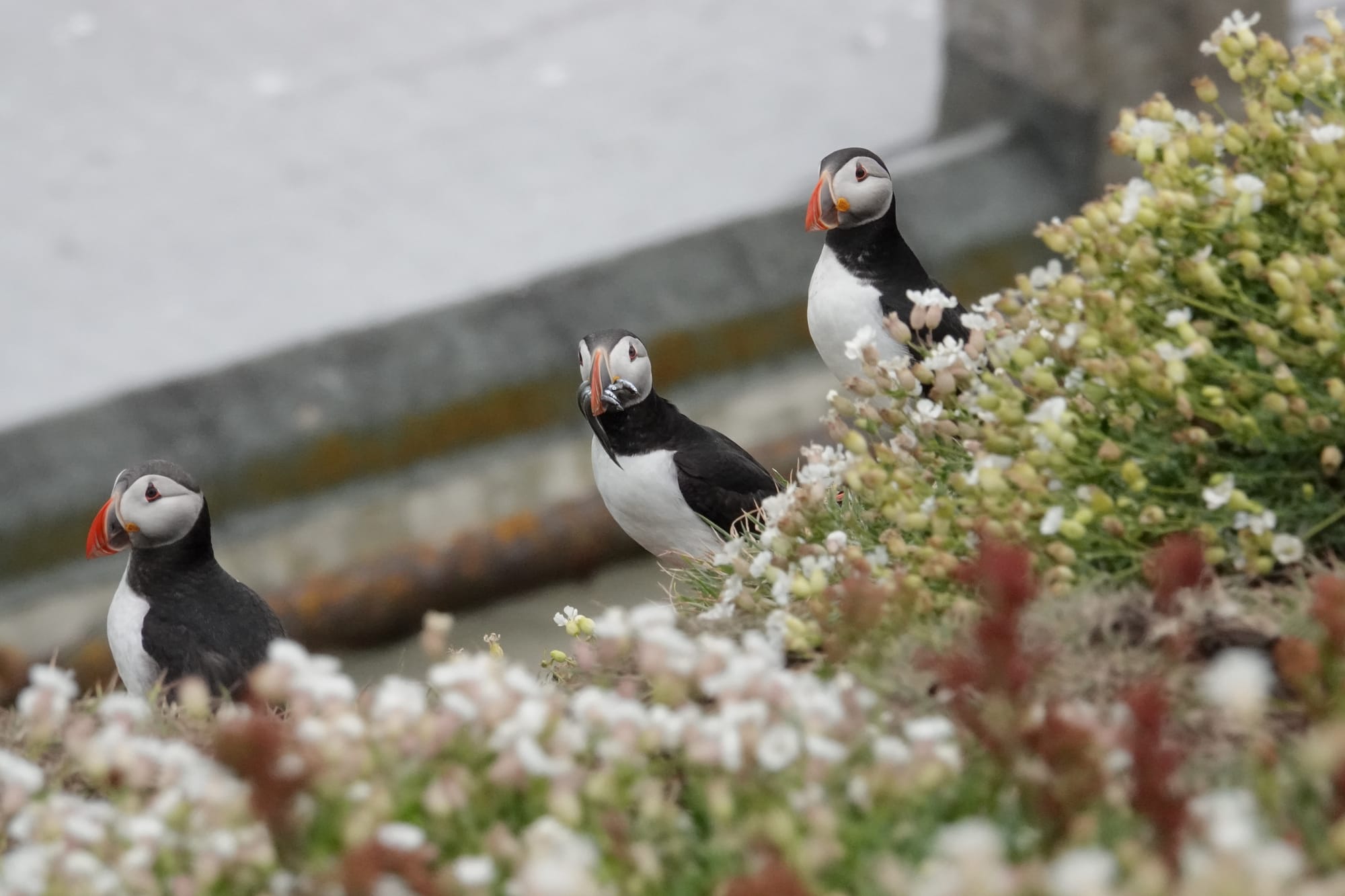
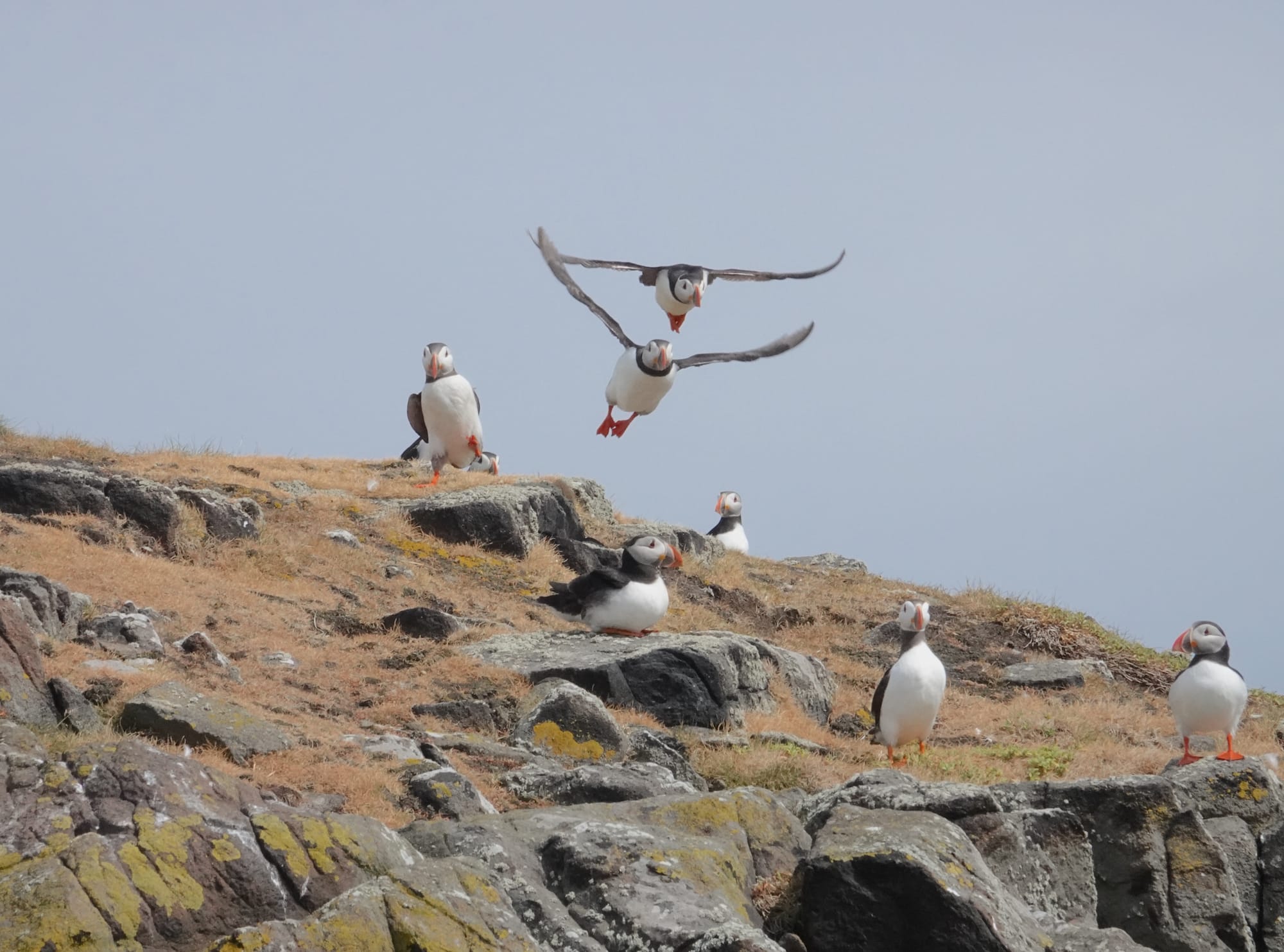
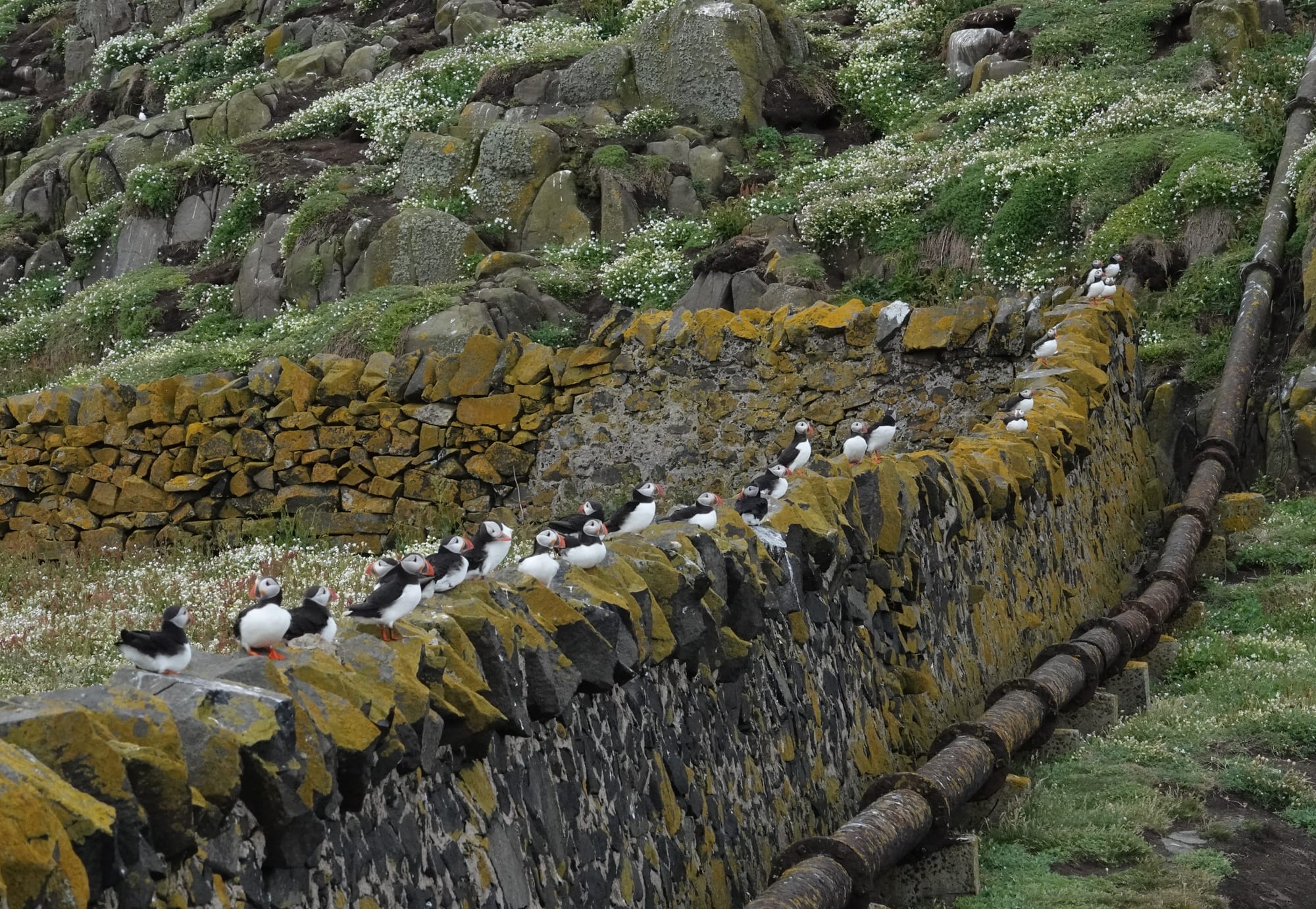
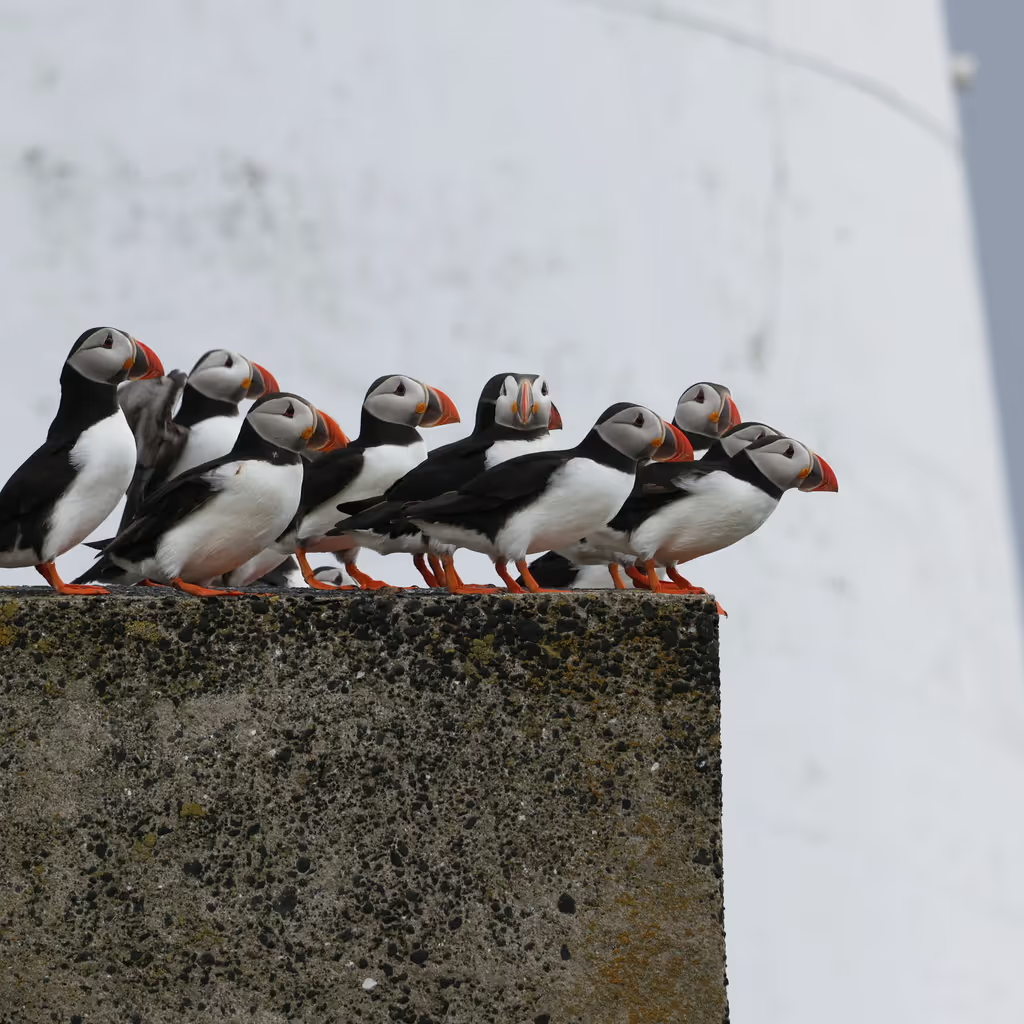
There were also too many of the other birds, those who don't dive like the seabirds.
Some of the gulls seem to prefer nesting on solar panels, clearly recharging themselves. #BirdsArentReal
Pirates on the Isles
Neighbourly squabbles in Cramped Quarters are not uncommmon. There are certain spots where gulls hang out at. You would pass by rowdy groups of large seagulls engaged in barbaric behaviour.
Like other densely populated cities, crime is often rampant. Unfortunately, the breeding grounds of the small adorable puffins are crawling with gull bullies. Gulls can't dive as well as the puffins, who can dive up to 60m, and would wait at the puffin burrows to rob the puffins of painstakingly procured bounty. A small puffin attempting to land and scurry into their burrow is ambushed by a larger gull who swoops in to steal from her. Gulls are generally many times bigger than a puffin and can easily grab a puffin to force the puffin to let go of their catch.
Besides robbing their neighbours, they also engage in brutish activities like eating stolen gull eggs and chicks.
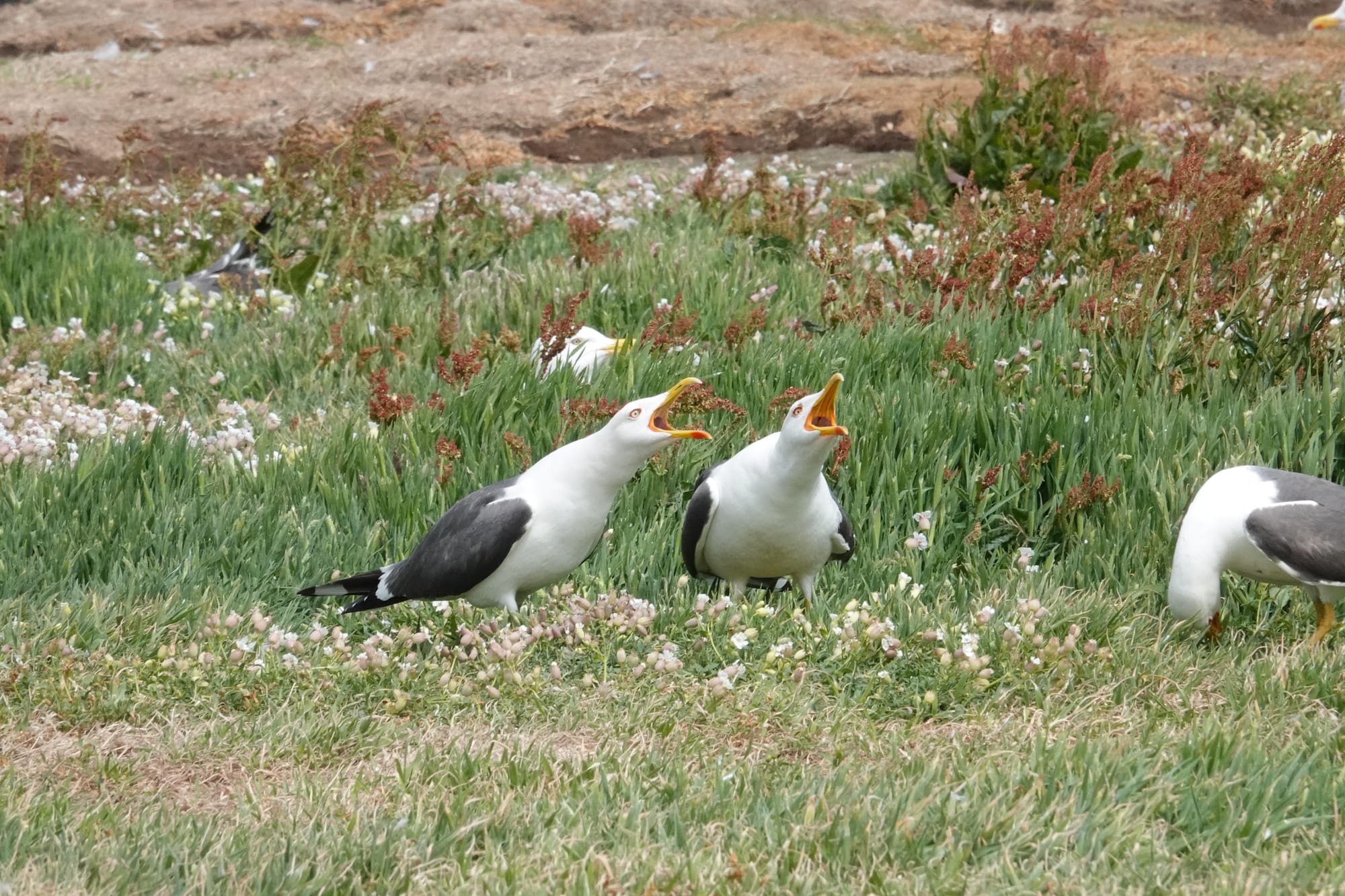
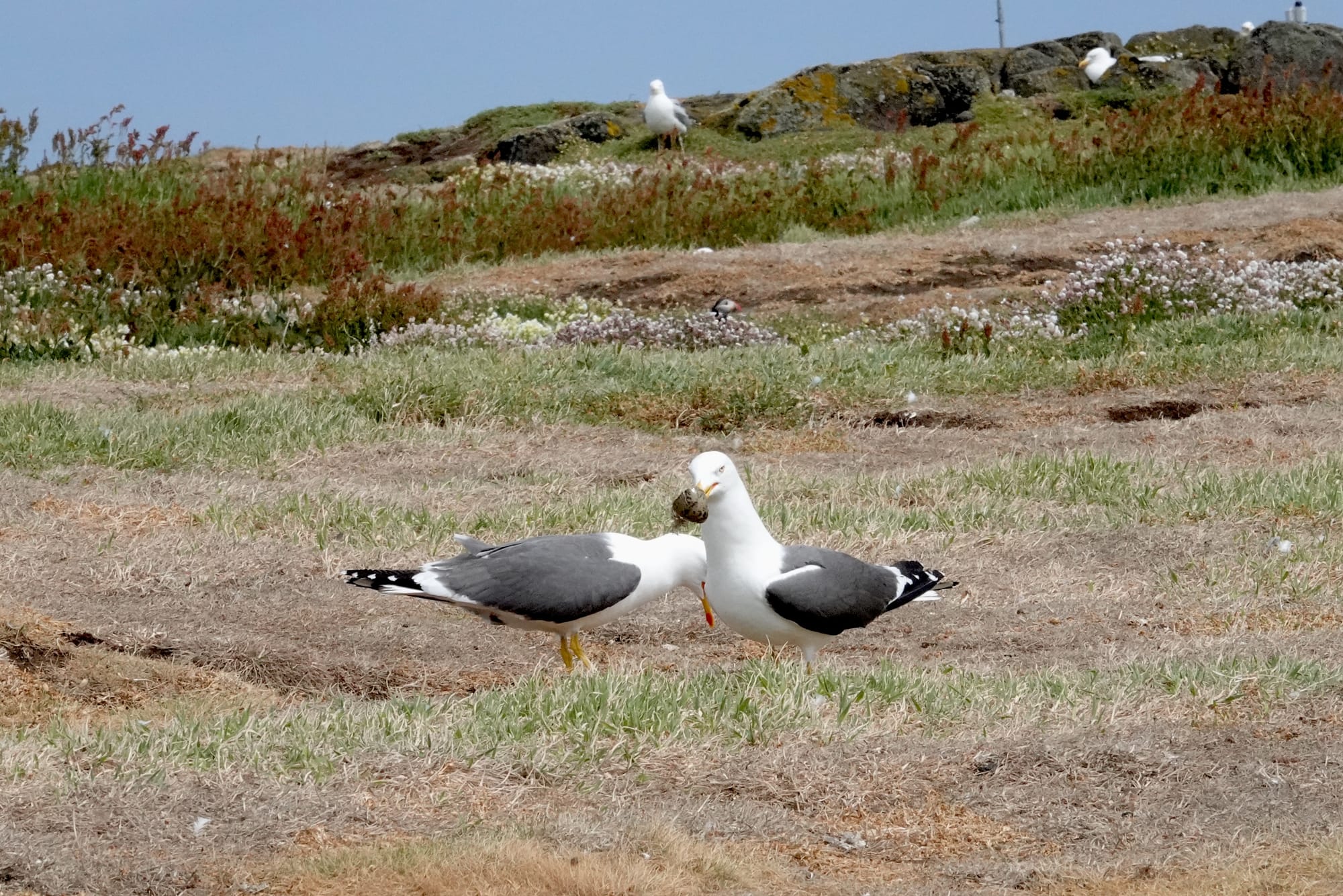
Besides neighbour bullies, the puffins are also fighting a legal battle: Lifting the ban on sand eel fishing.
Trip to the Trennish Isles (Lunga and Staffa)
As usual, our Scottish boat trip had a small hiccup. We could not land in Staffa as the pier was still undergoing repair works. The journey to the Trennish Isles from Oban town can be rather lengthy. It starts with a long but scenic hour-long ferry trip from mainland to sleepy Isle of Mull. There were many dog passengers. Mull was a nice peaceful island with many sheeps and some cows. A mini bus is needed to get to the pier on Mull. The road taken on 40-minute minibus ride to the pier was rather windy. From the pier, we took another boat ride. There were fishing guillemots and razerbills sighted from the ferry. Soon, we started to see small groups of puffins flying in a straight line. It was a sign that Staffa, a seabird residence, was near.
Staffa Island rises from the sea like nature's attempt at architecture—its distinctive hexagonal basalt columns forming what appears to look like a cathedral to many, especially when accompanied by the sound of the waves resonating within the island's hollows. The hexagonal basalt column formations formed by ancient volcanic activity around 60 million years ago. When lava cooled and contracted, it creating distinctive six-sided pillars. But still, I was impressed by the grand basalt columns that made up the cave. The loud crashing sounds of the powerful waves crashing against the island edges made of more basalt columns while i stood at the edge of the small rocky boat. It was a sight to behold. We watched seabirds take off from the verdant tufts of grass that cap the basalt pillars. The abundance of puffins, guillemots, and razorbills is a reminder of Staffa's role goes beyond just looking pretty. The boat rocks precariously as waves surge and retreat from the cave's entrance, creating a rhythmic, haunting melody as water meets ancient basalt.
Fingal's Cave inspired Mendelssohn to compose his famous overture. He took a trip to the British Isles in 1829 excursion, and visited Staffa and Fingal's Cave. It was reported that the composer immediately jotted down the opening theme for his composition after seeing the island. I did not hear any music at that time though. Perhaps It is only audible by walking in the cave. Due to the damaged pier, we didn't land in Staffa and only landed in Lunga.
We climbed from the boat onto the makeshift board walk which was foldable metal plant and cautiously balanced on the mossy rocks at the shore of Lunga. The start of the trail was a short steep climb which led to a small levelled stretch along a cliff dotted with puffin burrows.
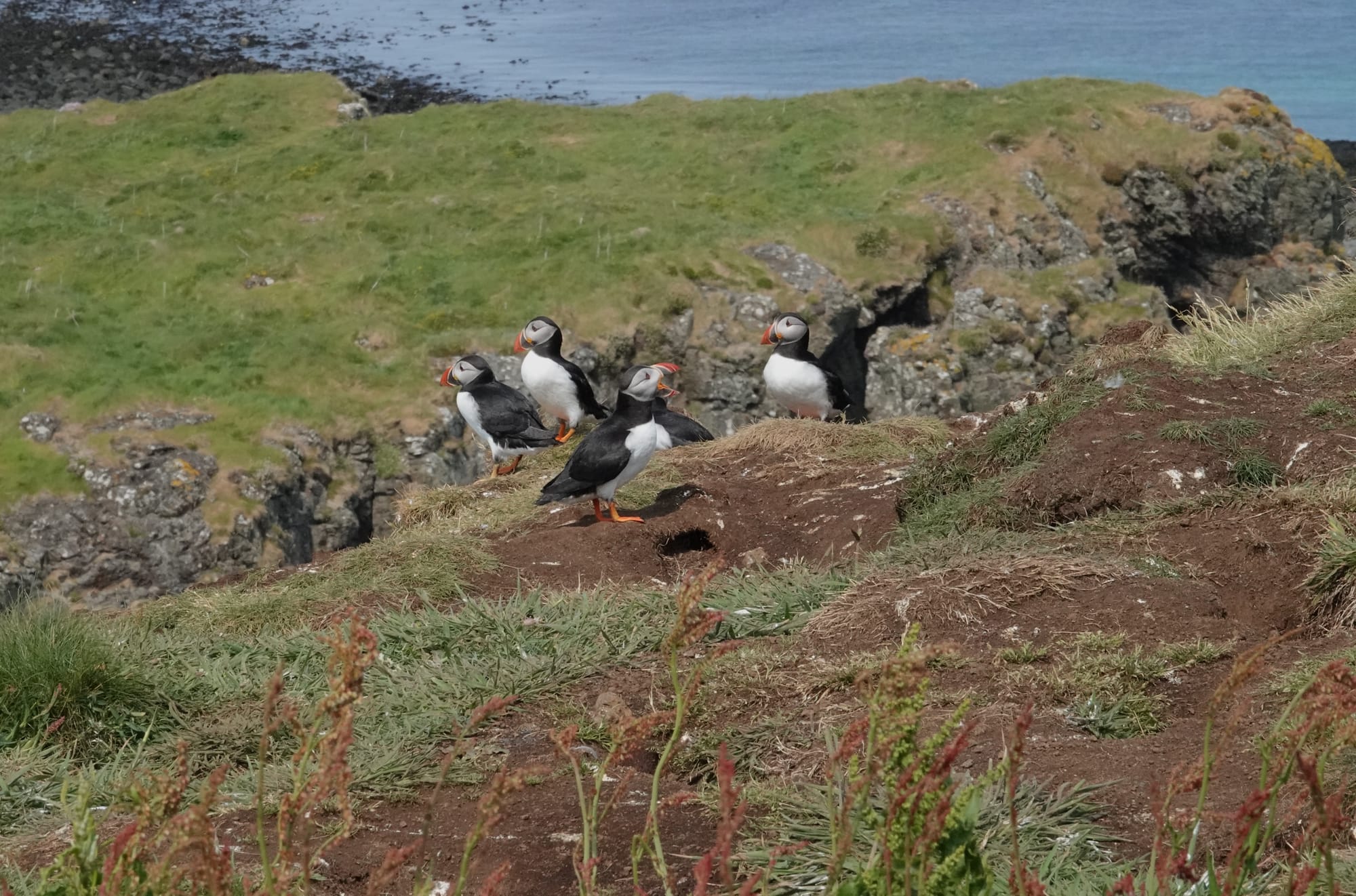
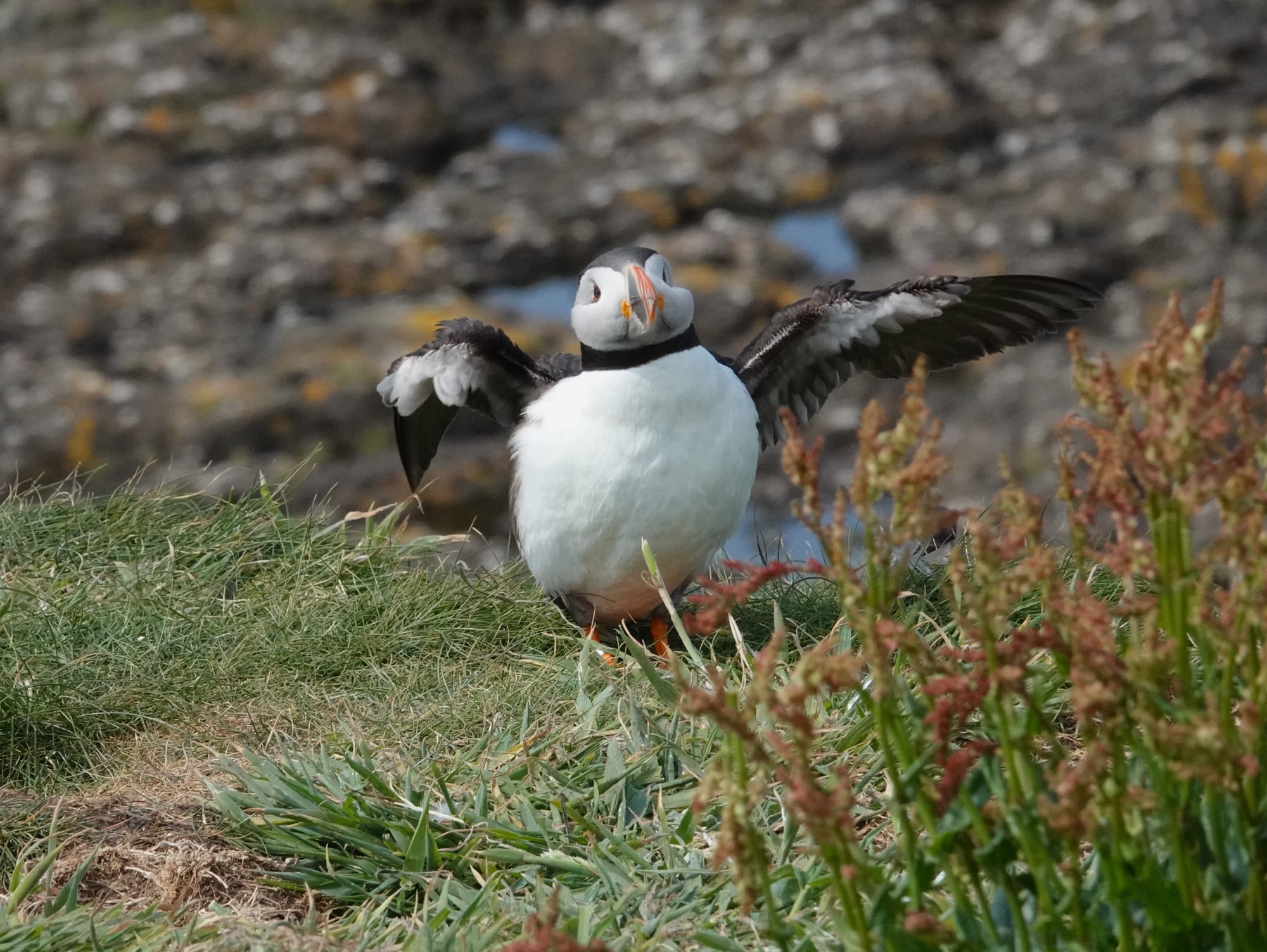
Puffin burrows along the cliffs
Groups of impressed tourists watched the puffins behind the rope barrier along the cliff. Puffins continued their comical waddles with business-like determination. They land and scurry into their burrows to deposit their fish deliverables and then flew off hurriedly, almost as if they're jet-setting business tycoons heading to their next important meeting. Puffins flew back to their burrows with a beak full with sand eels. After visiting several puffin colonies, it was still a mystery to me how the puffins manage to catch so many sand eels while holding them in one beak. (Edit: I googled without finding the answers myself: https://www.hakeem-almidan.com/posts/puffin-multiple-fish-in-beak-wonder)
There were nests of the shags, puffins and razorbill under rock piles along the trail.
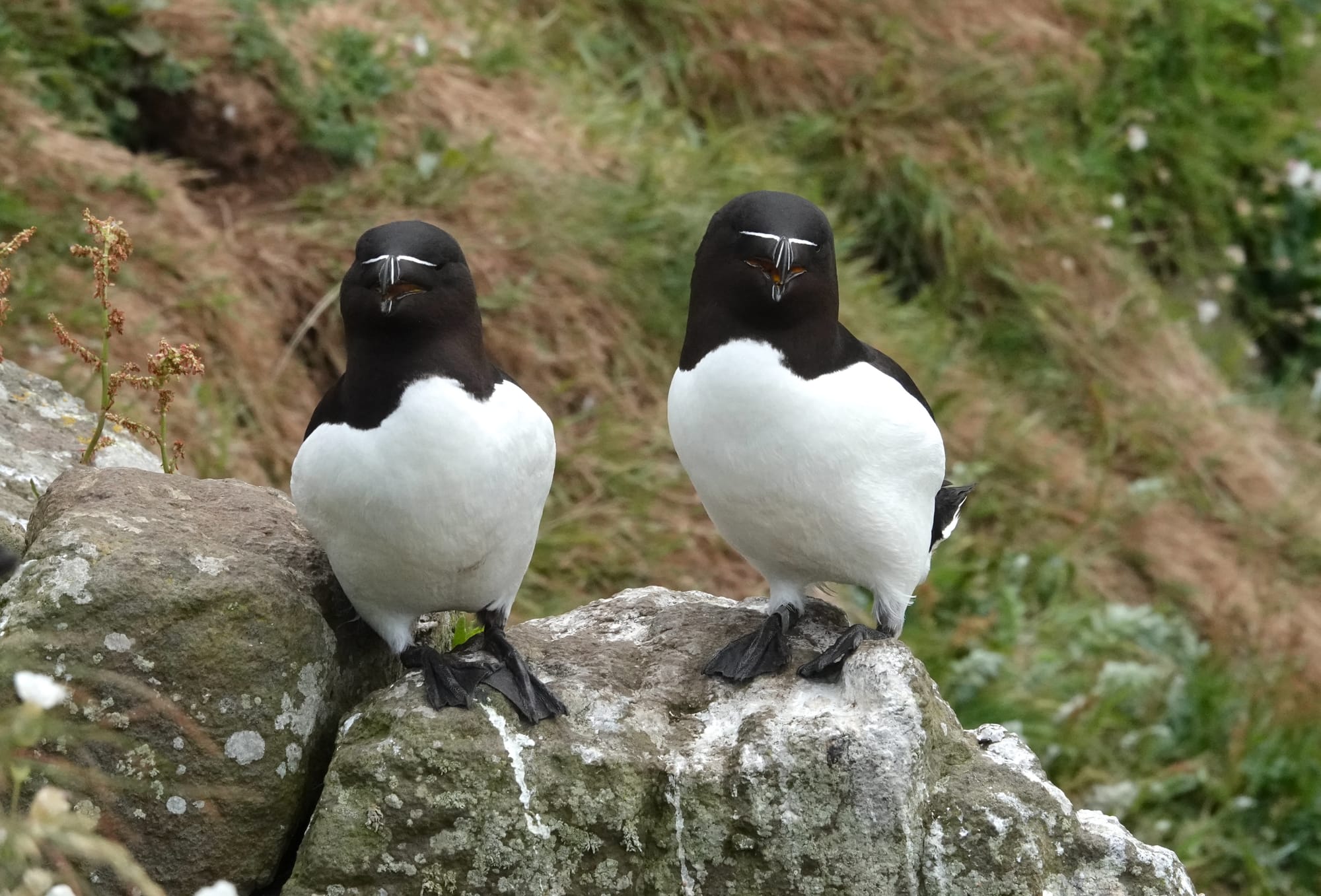
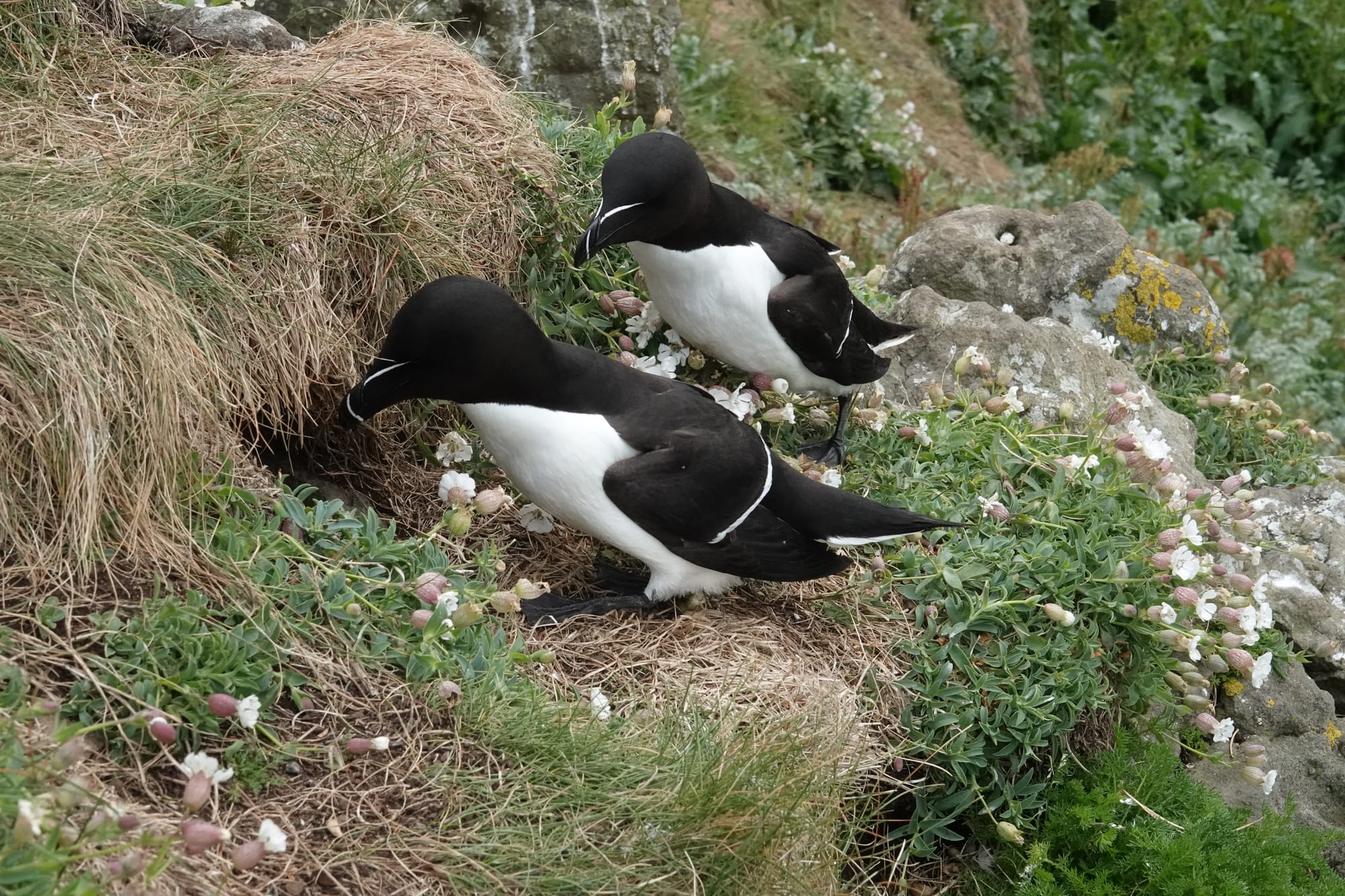
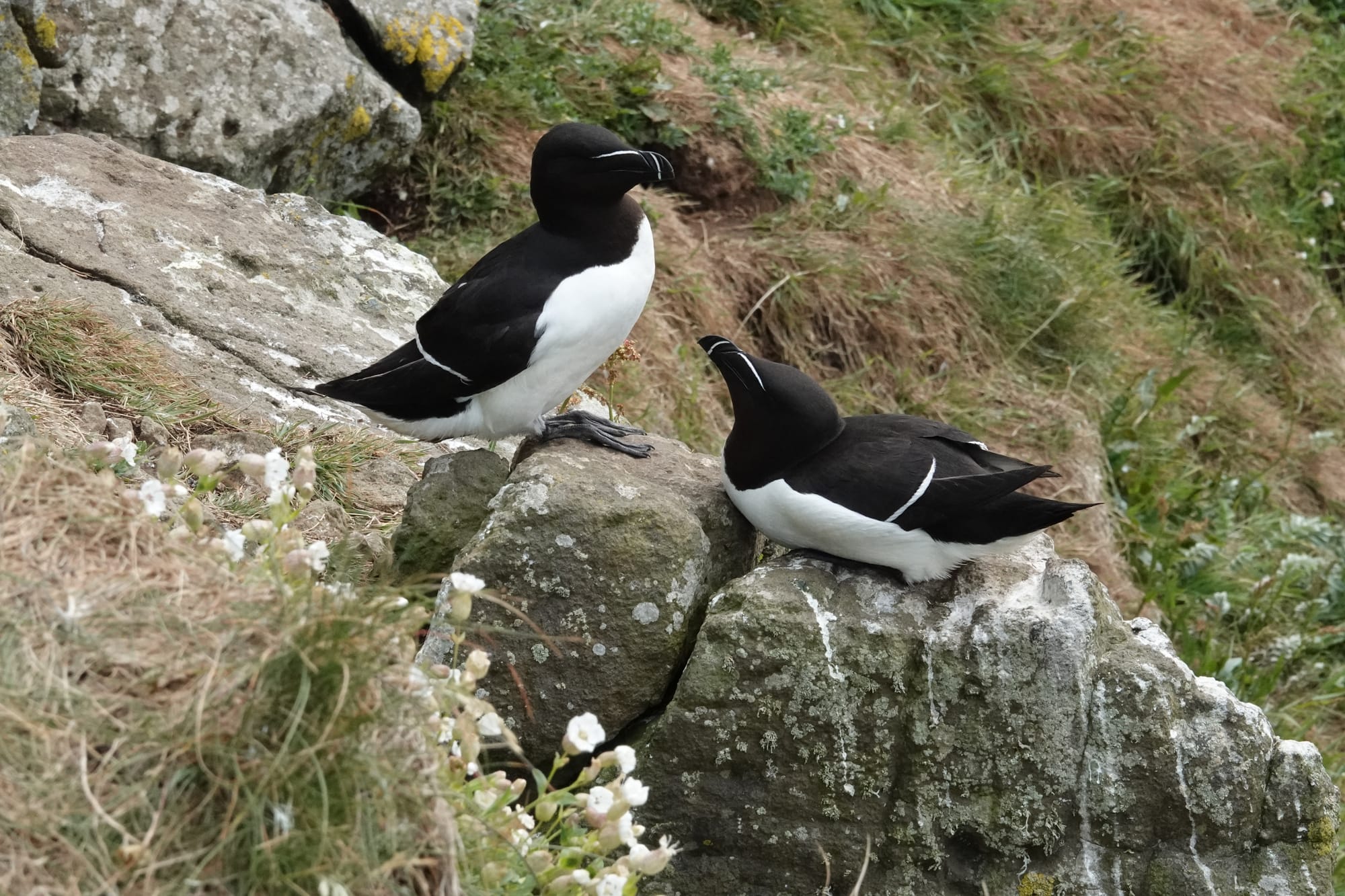
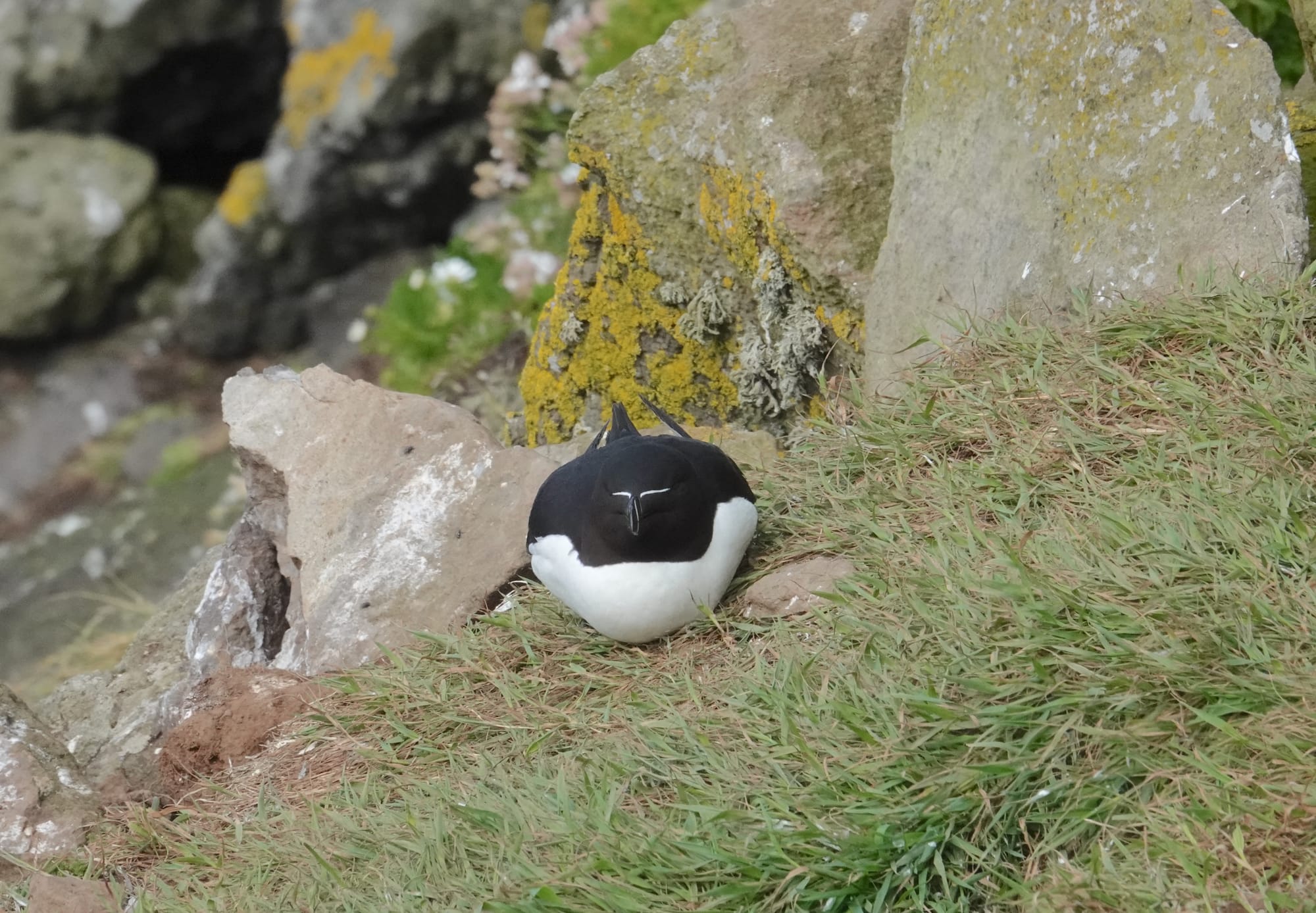
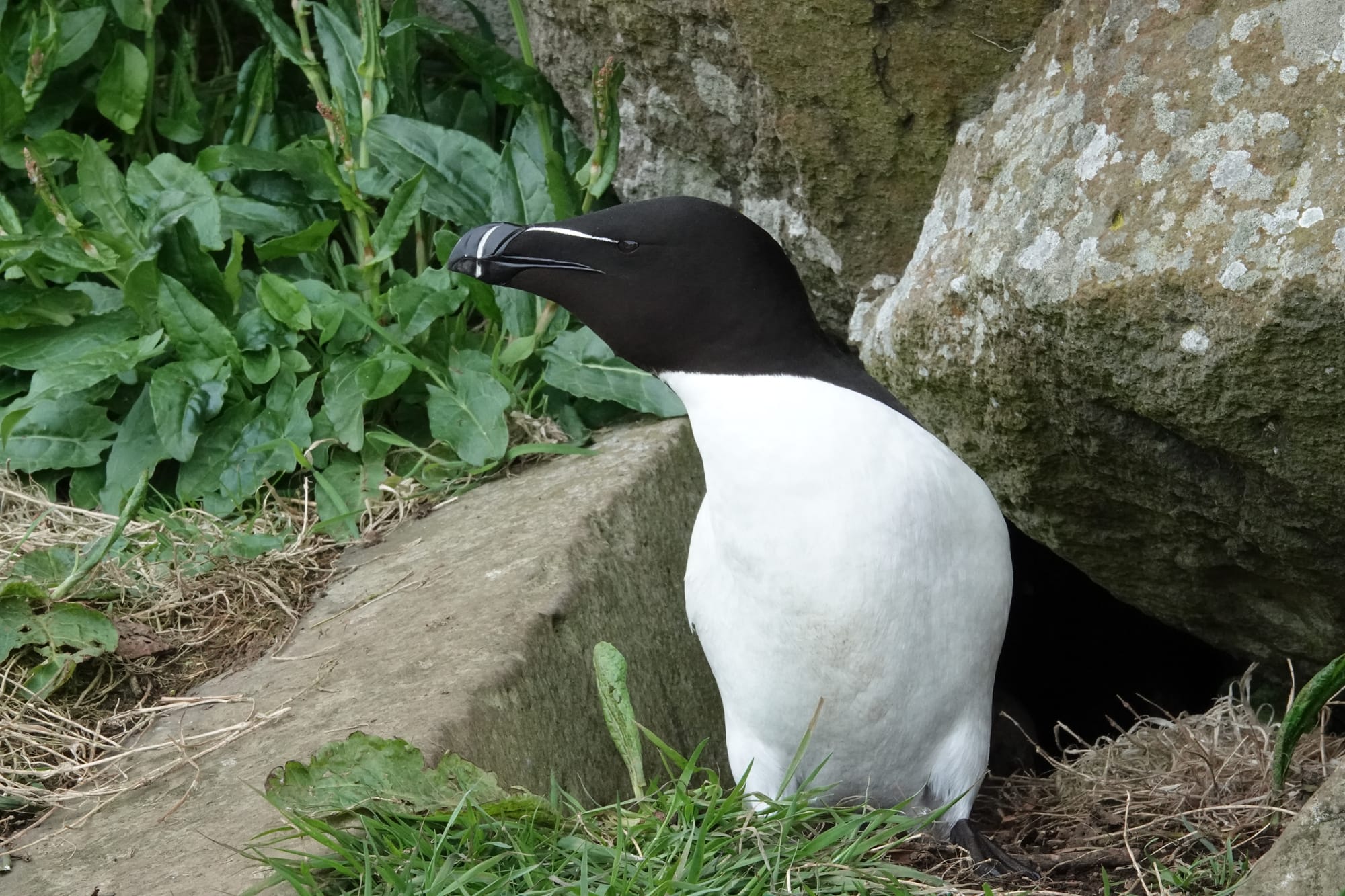
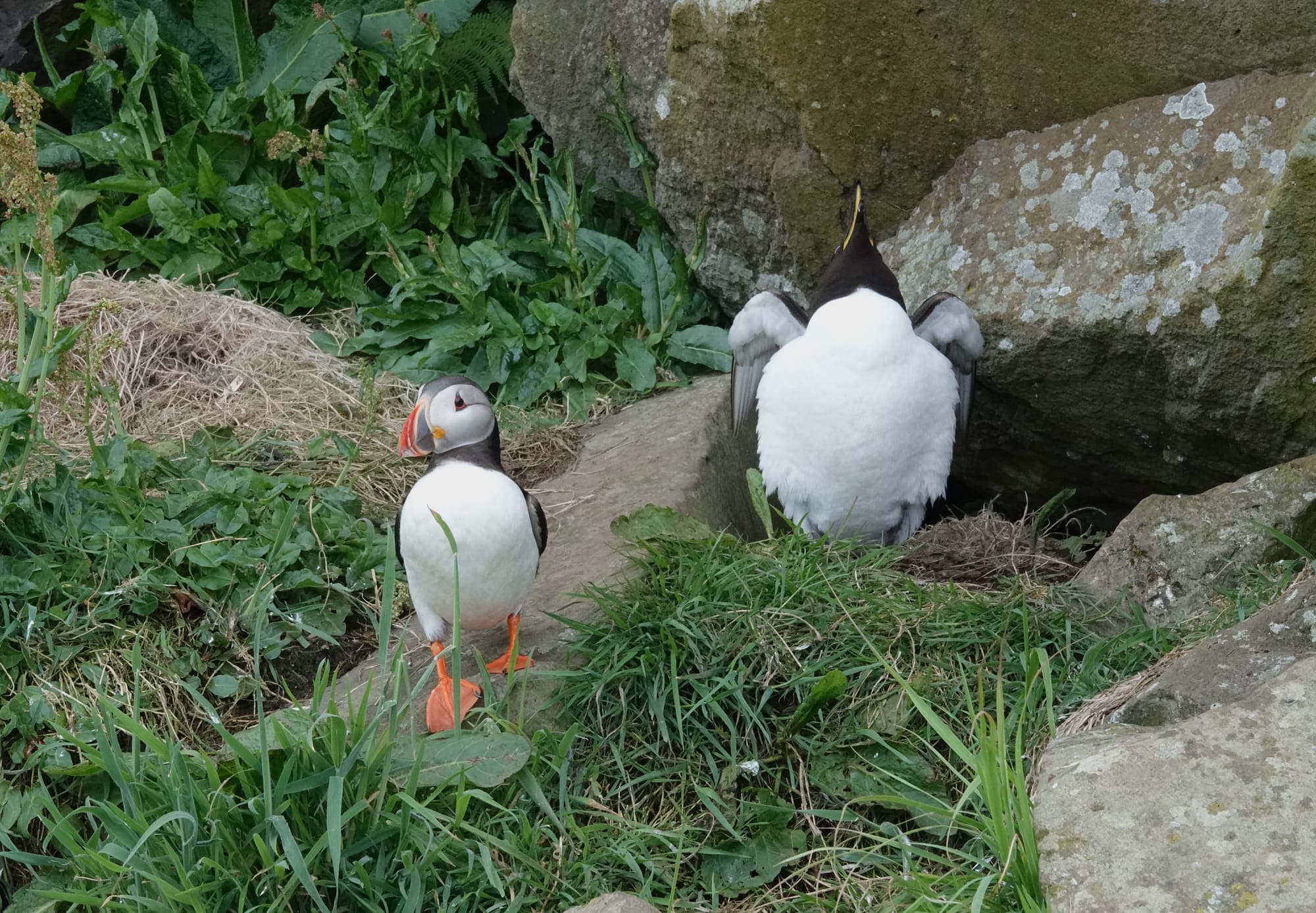
Razorbill appreciation gallery
At the end of the trail, we were met with a towering rock mound capped with seabirds. The fishy smell of guano and the racket from thousands of seabirds was indeed a full-body experience.
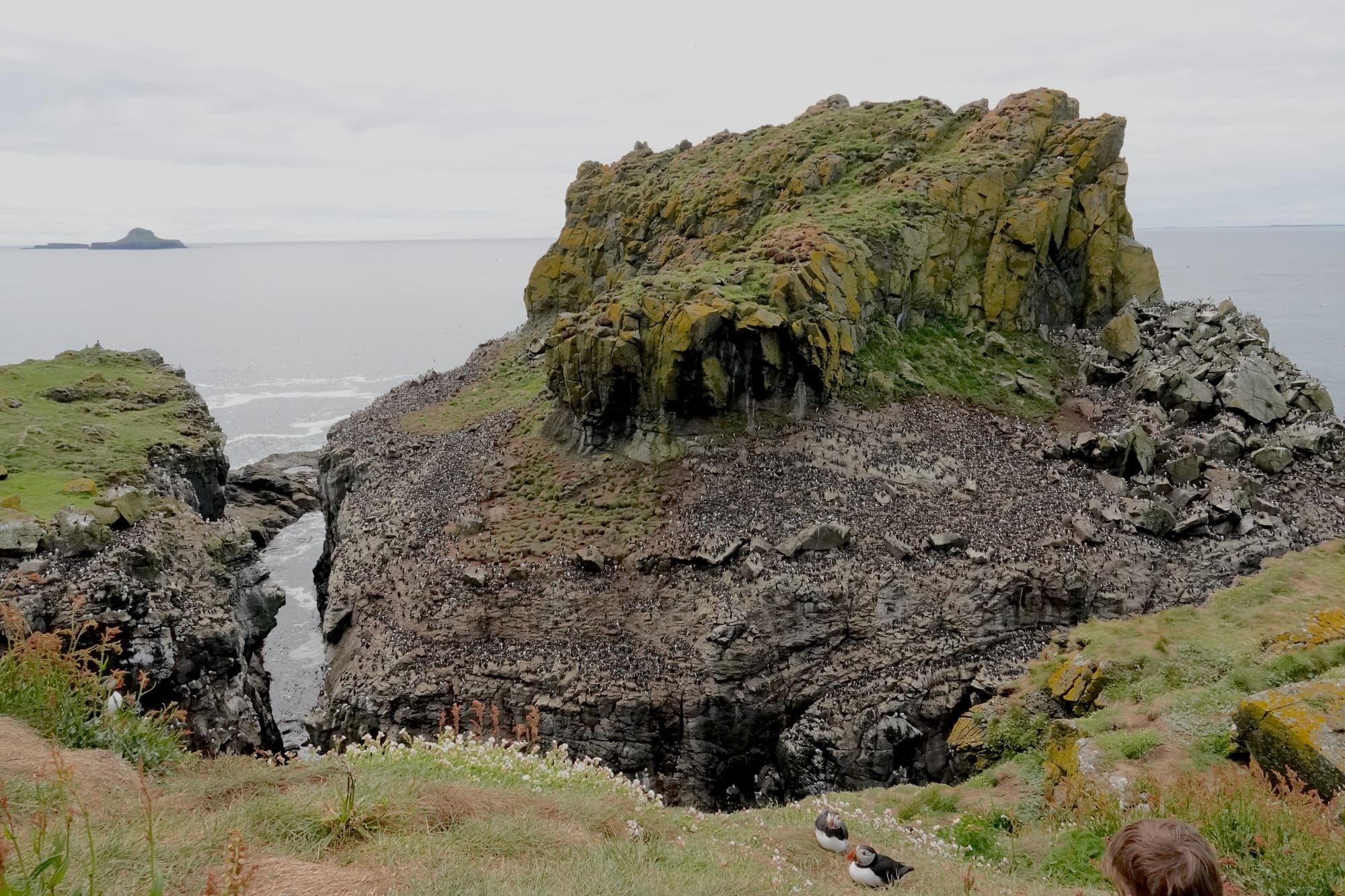
Farne Island
After visiting several puffin colonies the past few days, it is indeed possible to be slightly bored of puffins. We took a boat trip from Seahouses harbour to visit the Farne Islands. Here, we finally got to see the Arctic terns, who had been mostly absent in the other trips.
The Farne Island boat trip would start with a visit to some of the smaller islands. The boat circled around some of the smaller Farne Islands to give the passengers a view of the 3902940 seabirds who are zipping about, snoozing in their nests on the cliff edges or just chilling with their pals.Seals were a common sight here.
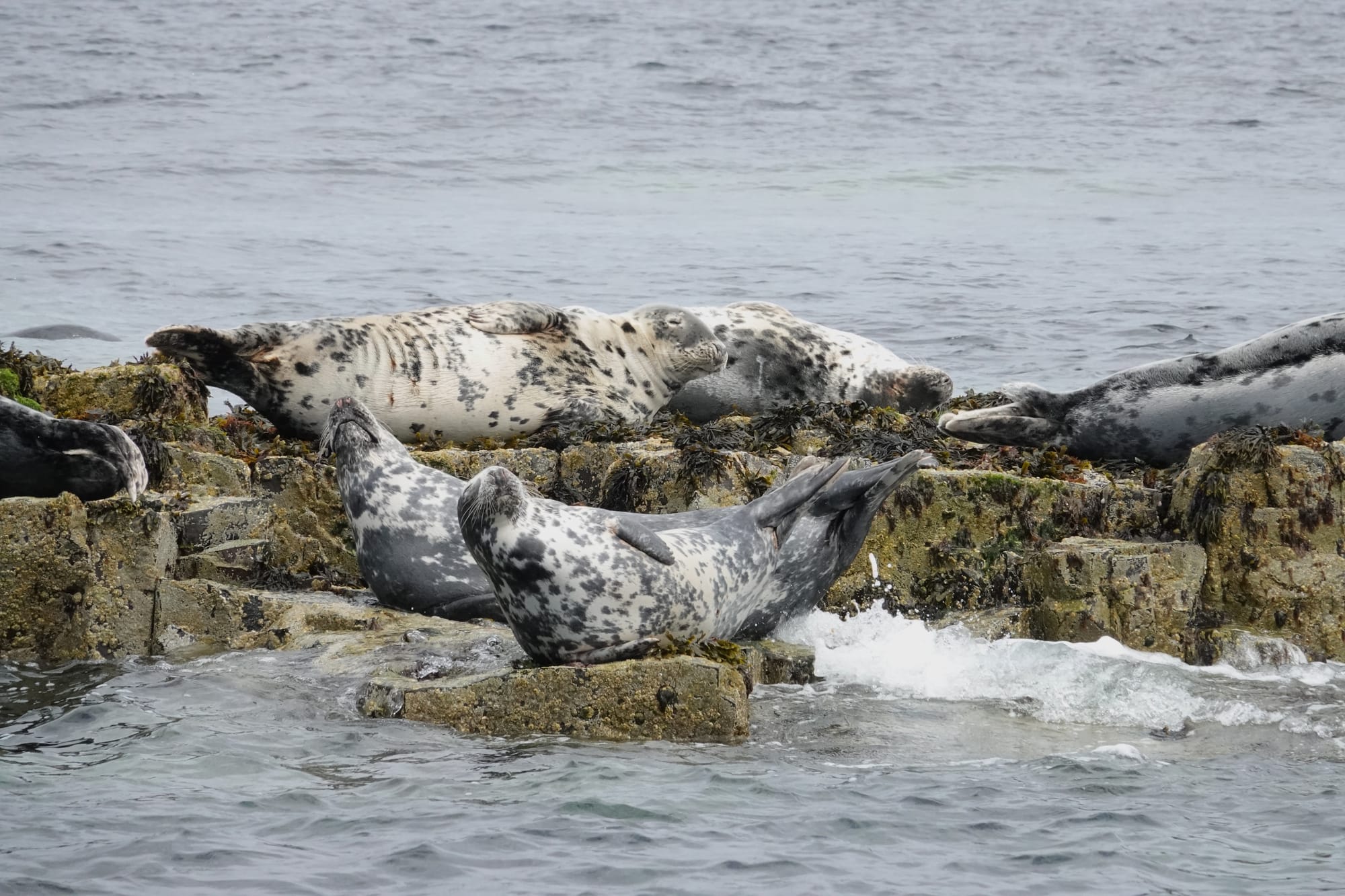
We visited a cluster of small rocks poking above the sea packed with more seabirds.
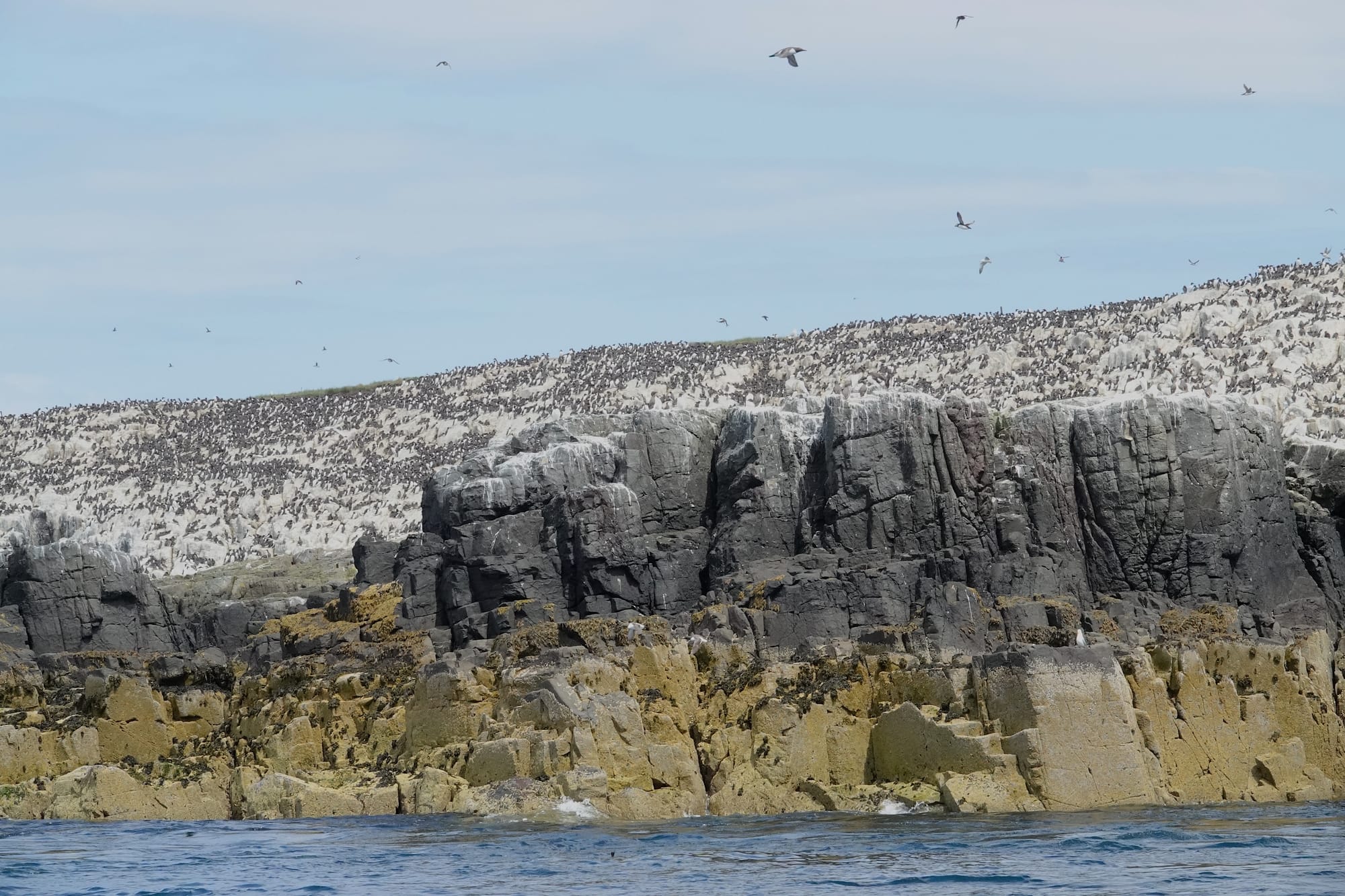
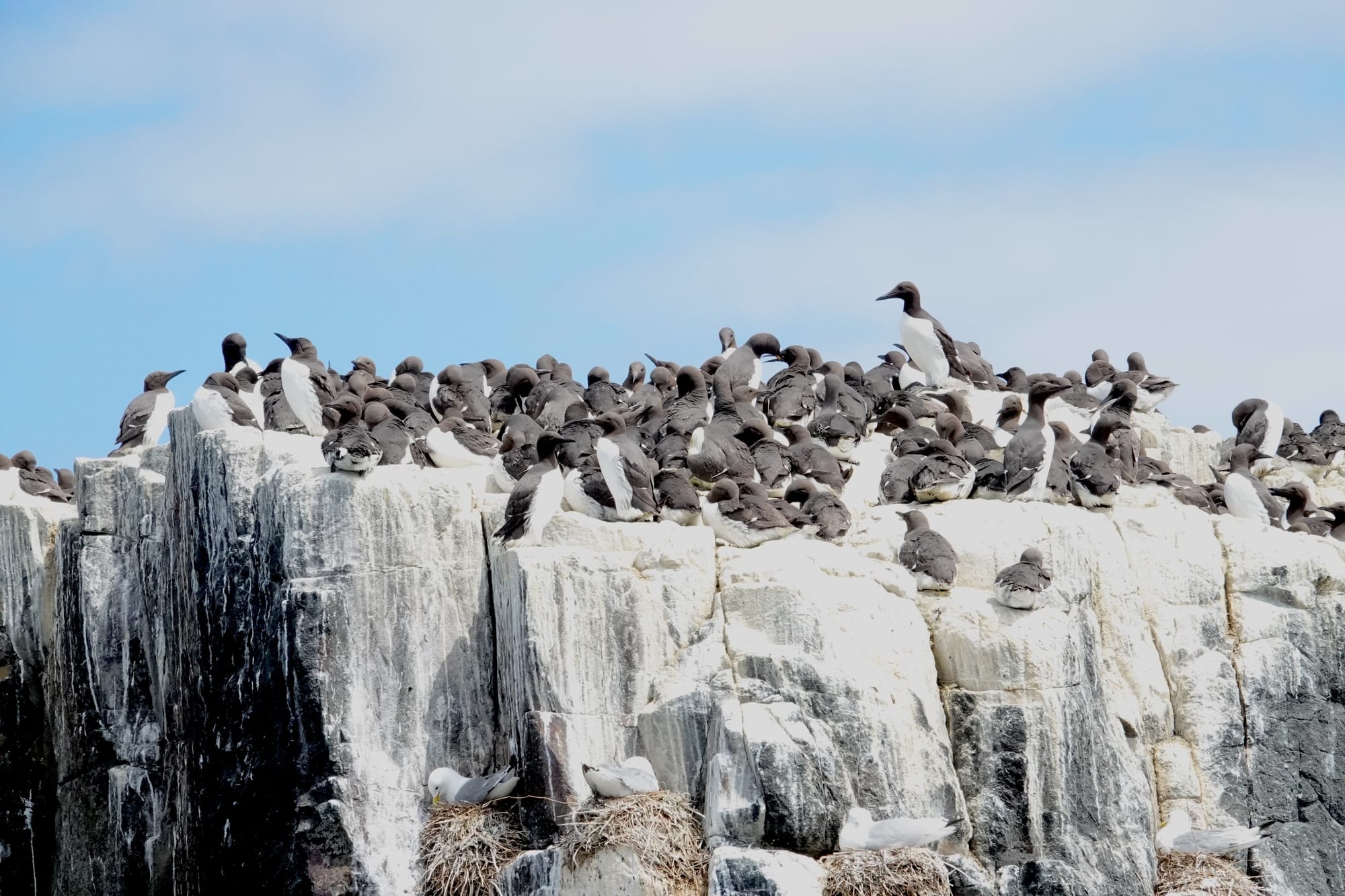
Then we finally landed on Inner Farne Island, and was greeted by a wave of Arctic Terns.
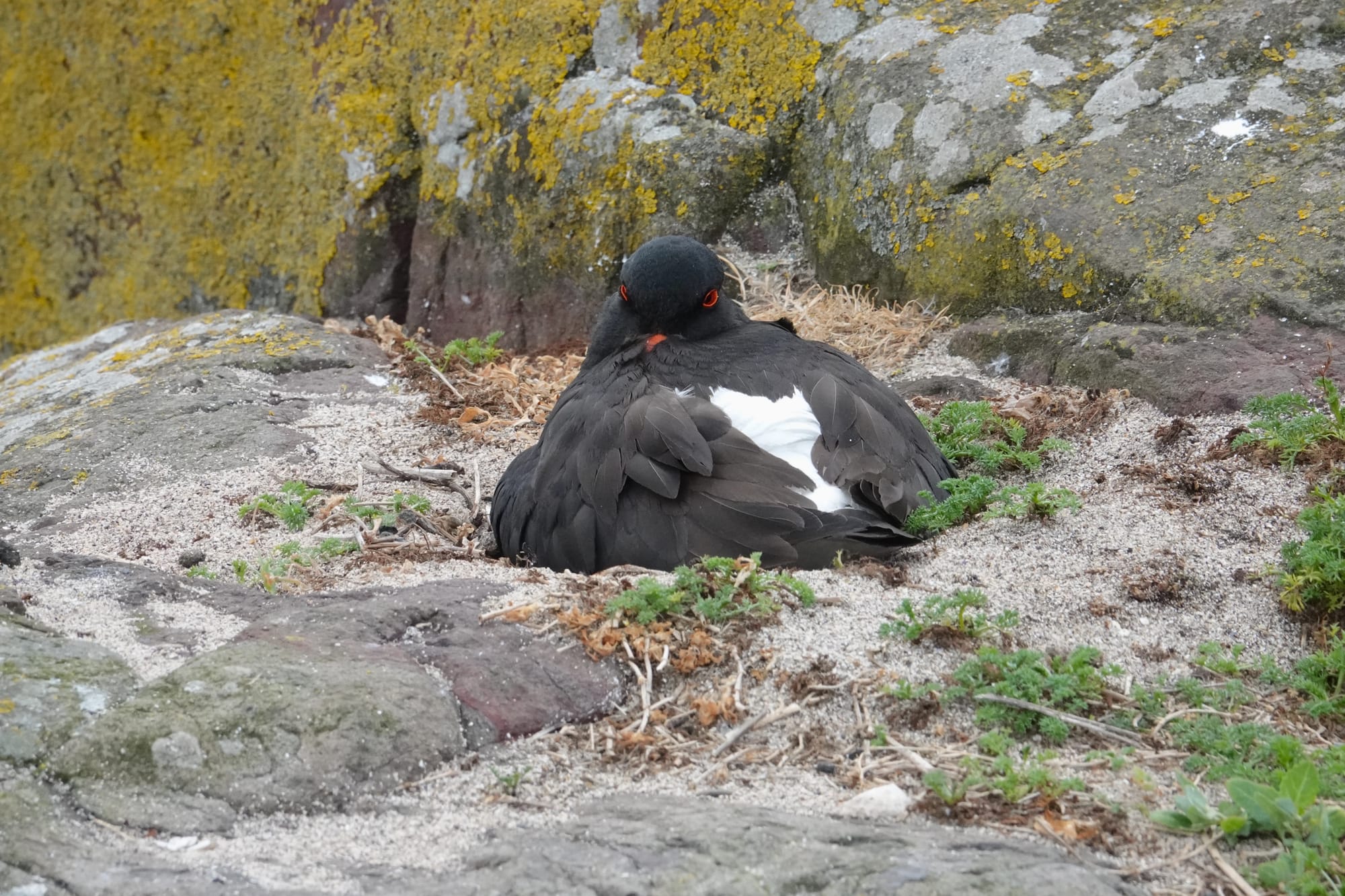
The Arctic tern, weary from its epic months-long journey from the South, returns to the familiar terrain of its northern breeding colony, only to encounter a new challenge: the intrusive presence of pesky tourists in their traditional breeeding grounds. Walking along the paths next to tern breeding grounds would almost guarantee pecks from the terns. Do bring a wide hat as poop-bombs can occur.
Tourists, equipped with cameras and binoculars, arrive by the boatload, drawn to the spectacle of thousands of nesting seabirds. The tern watches with irritation as the visitors amble unwittingly close to nesting sites, often in pursuit of the perfect photograph.
They engage in mobbing behavior, collectively dive-bombing, or even poop-bombing, intruders who venture too close to their nests. The terns' accurately aimed aerial assaults are a clear message for tourists to keep their distance.
One of them even got lazy and decided to land on a hat and peck on the head while seated comfortably on a hat.
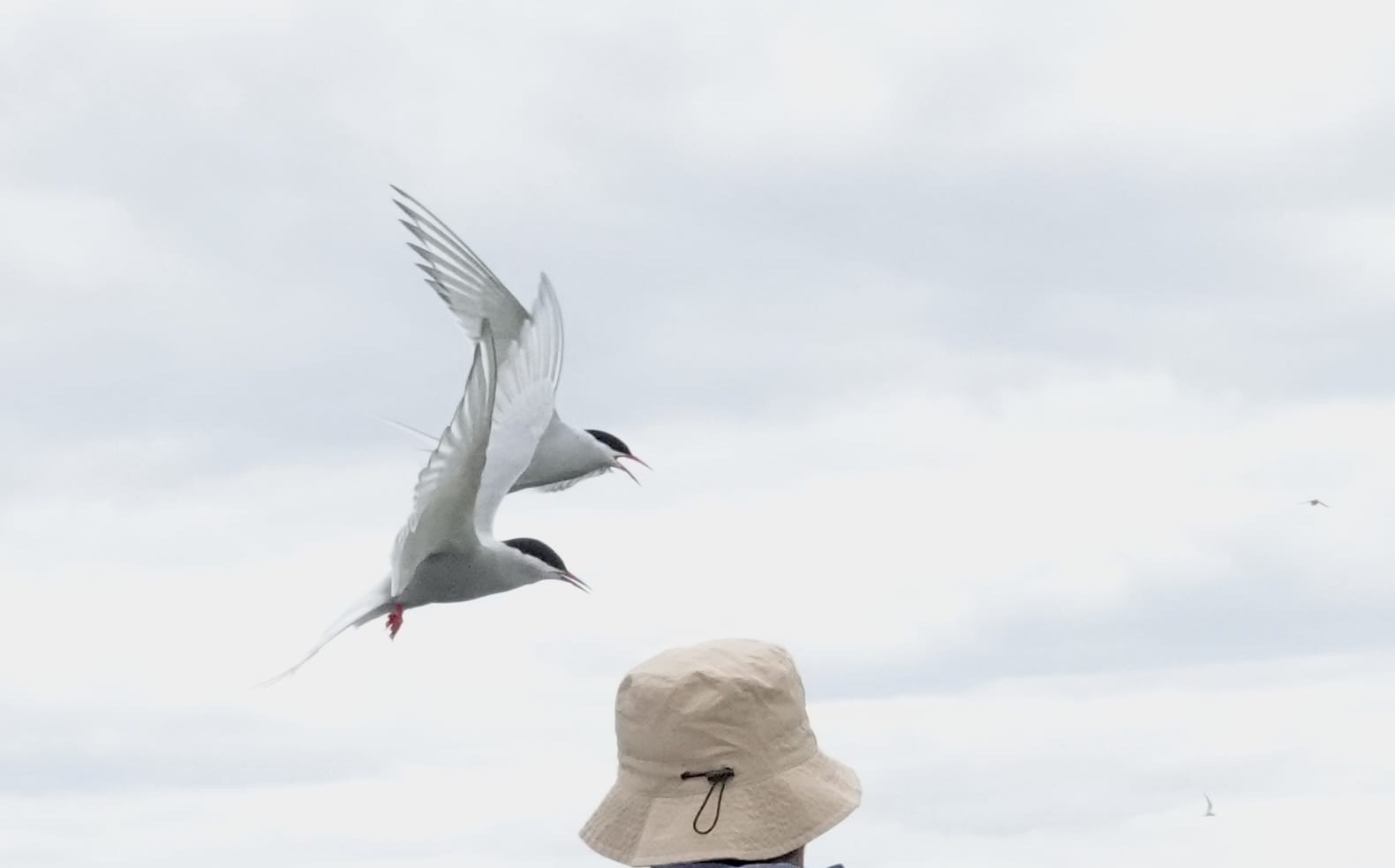
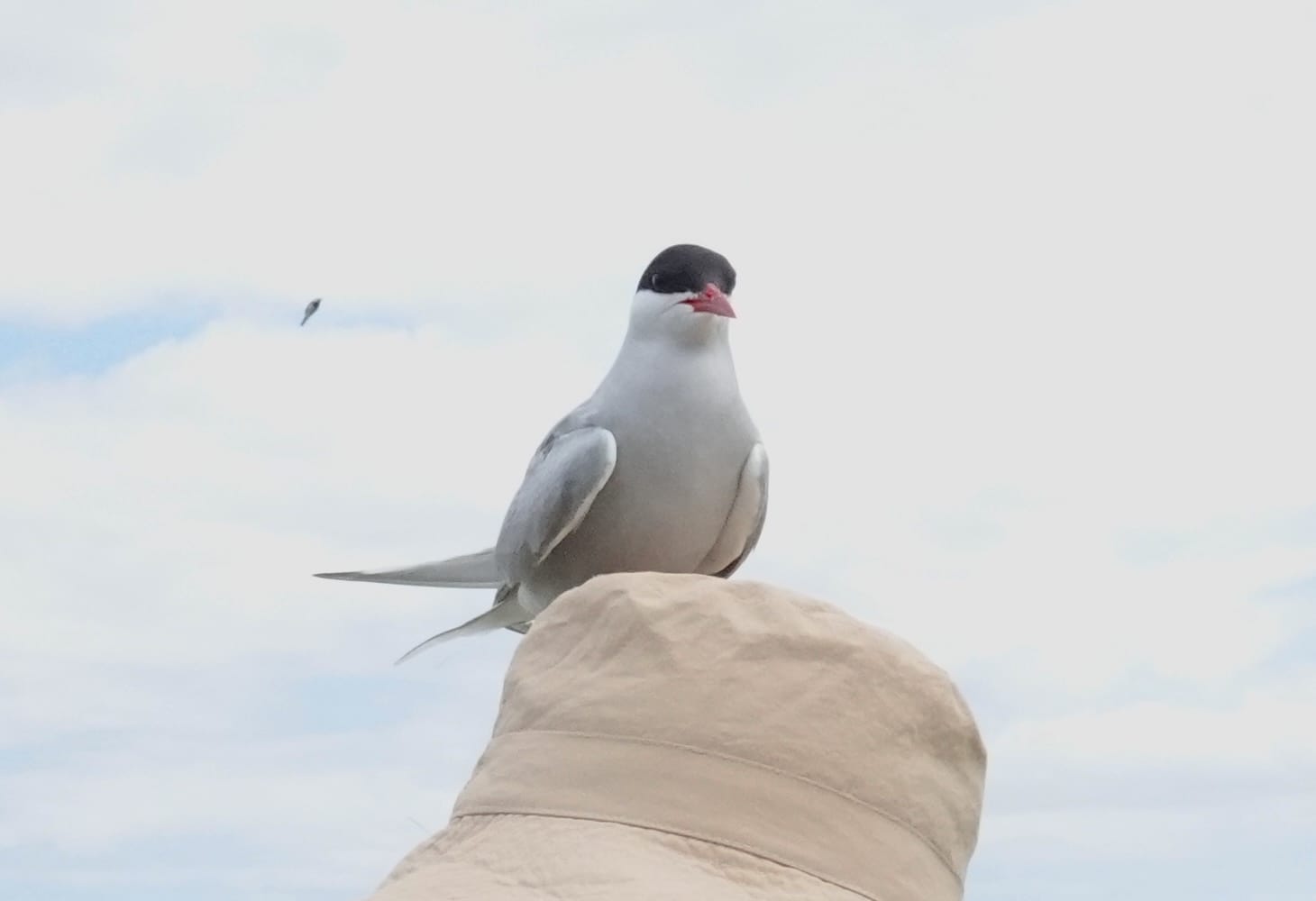
Sitting comfortably while pecking annoying visitors
To the ignorant tourist, a white bird with some black feathers is a seagull similar to the one snatching fries at the beach. Nope, the Arctic Tern is an impressive bird with extraordinary abilities. Arctic terns are migratory birds who had came all the way from the South to breed on this small scottish Island. Small but fierce, they appear sufficiently intimidating with their bloodred dagger-like beak, a sleek black cap which resembles a cat burglar's mask.
in comparison to the puffin, the tern can only get one fish at a time.
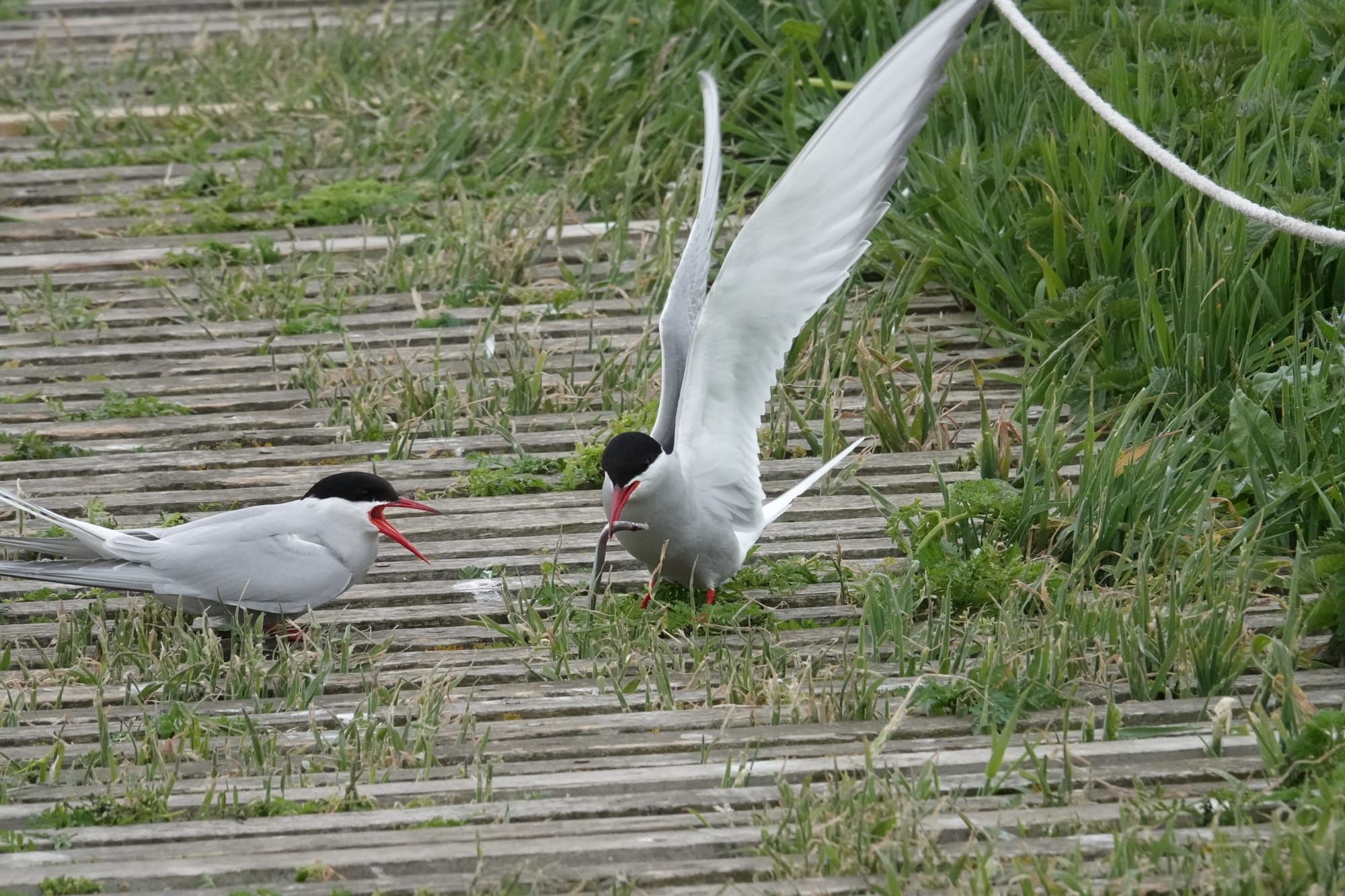
Watch where you walk especially near the terns breeding grounds. Unfortunately, some terns had the unfortunate idea of building their nests along the walking paths. The nests had been marked with a stone and a tiny rope fence, but it is still not hard to miss it and crush their eggs. maintaining a safe distance from nesting areas.
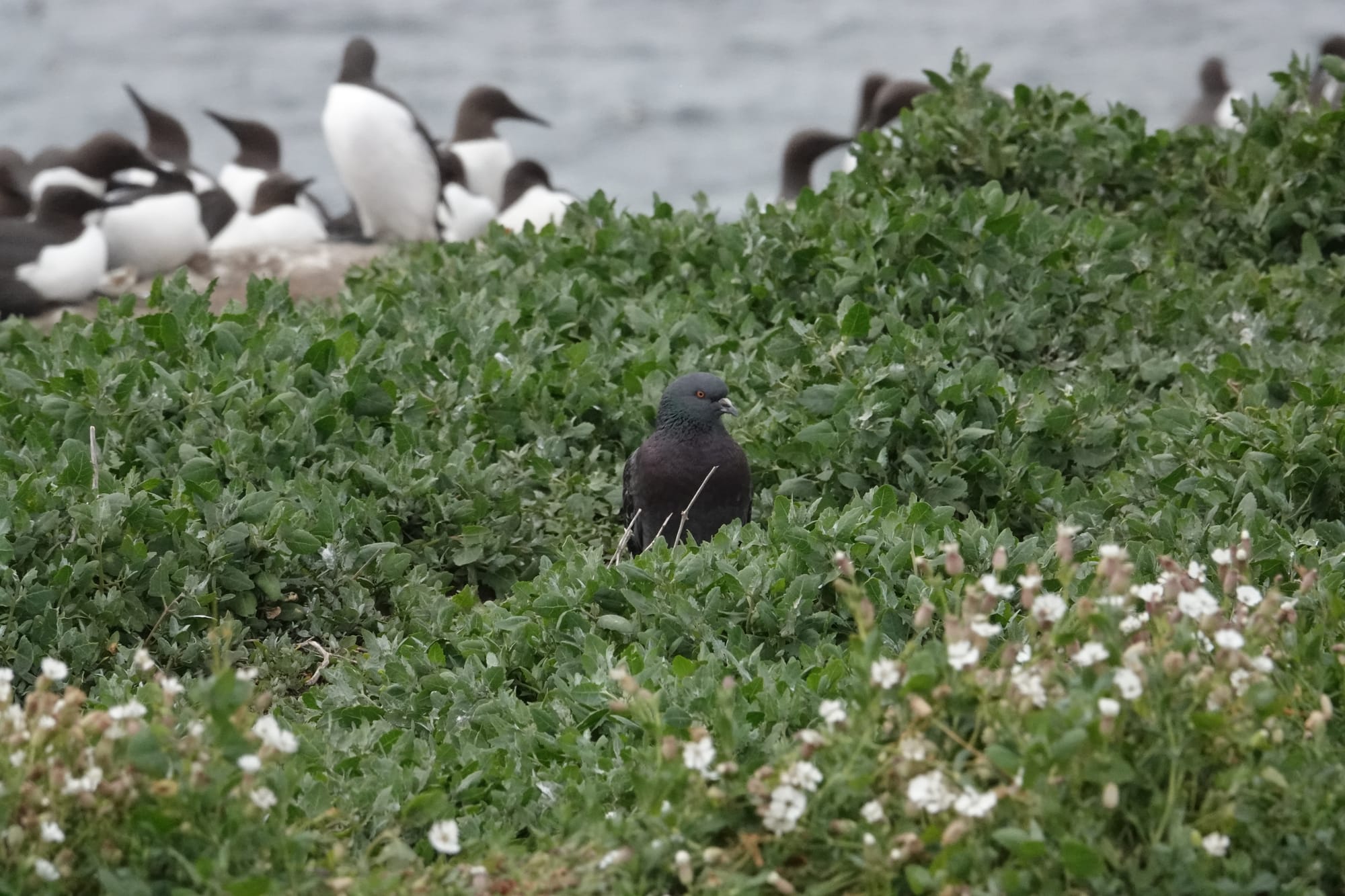
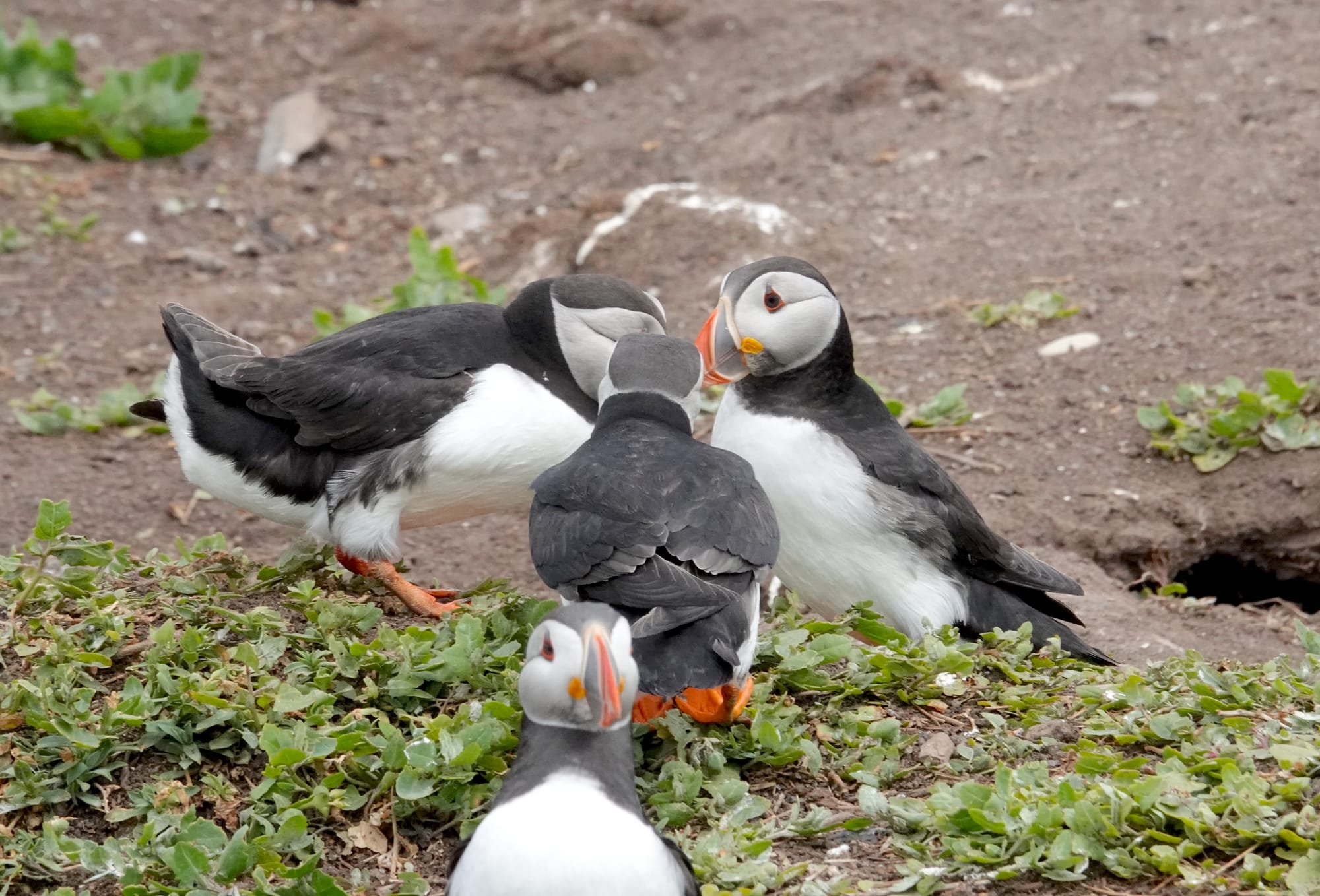
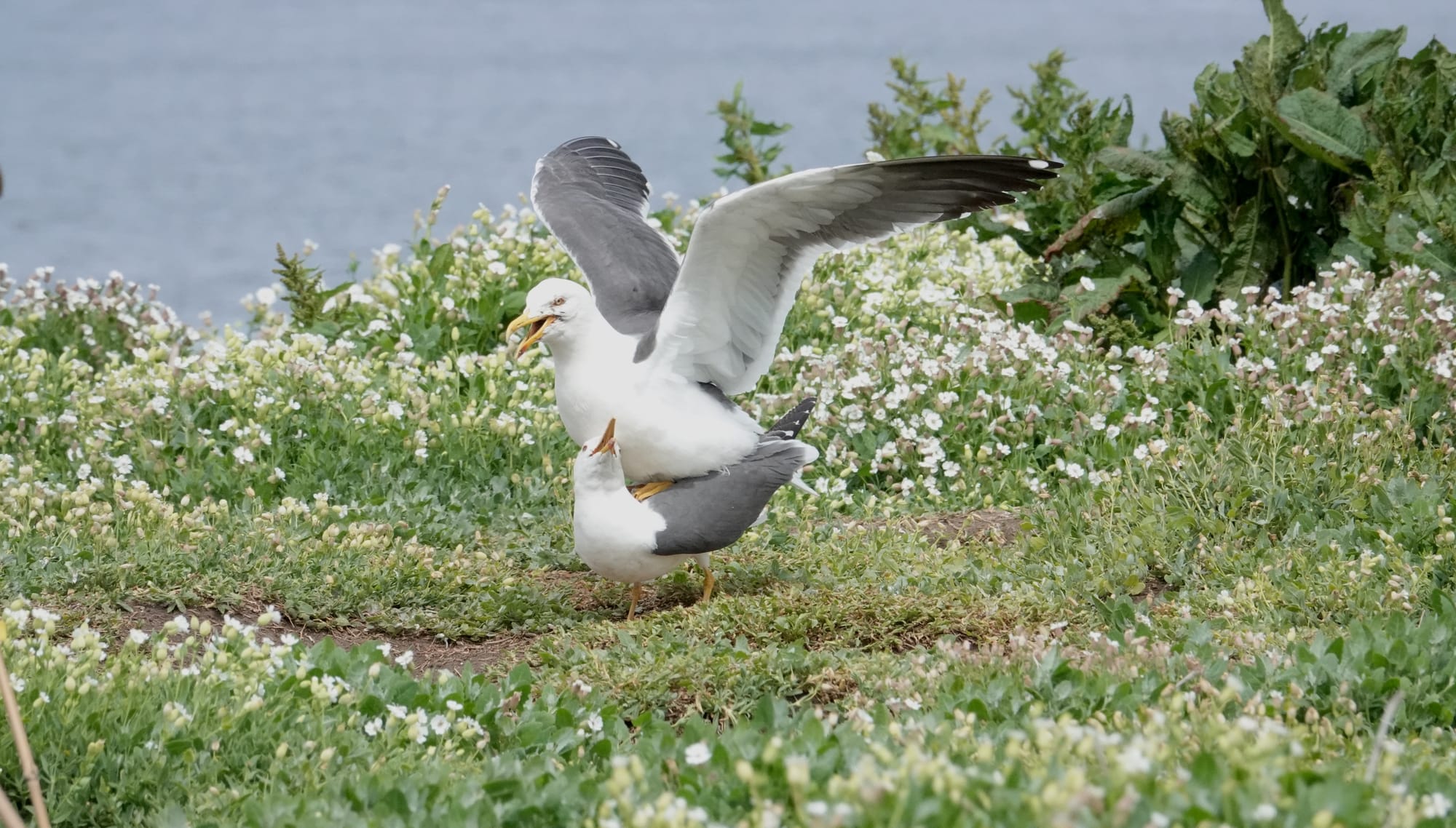
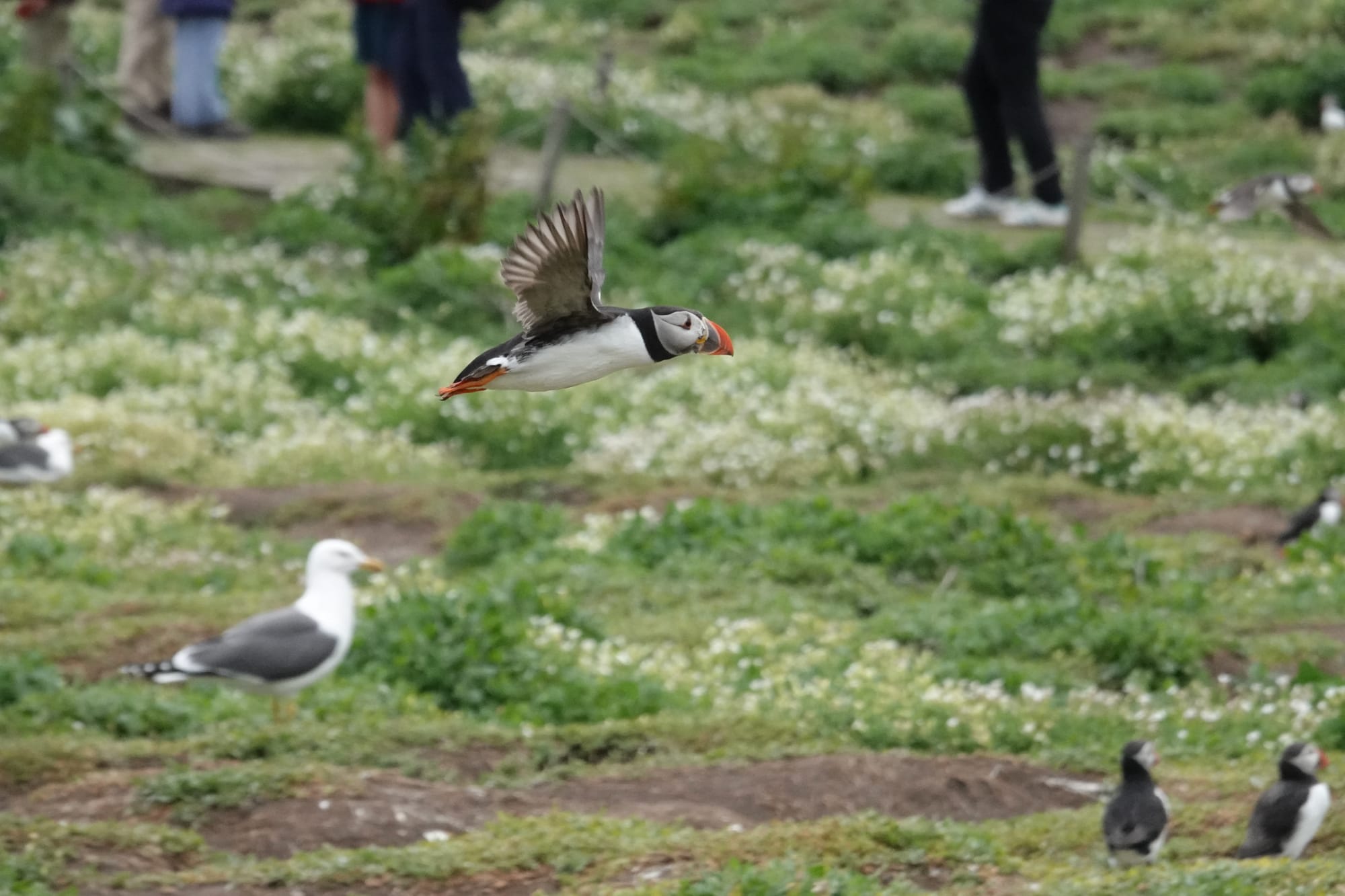
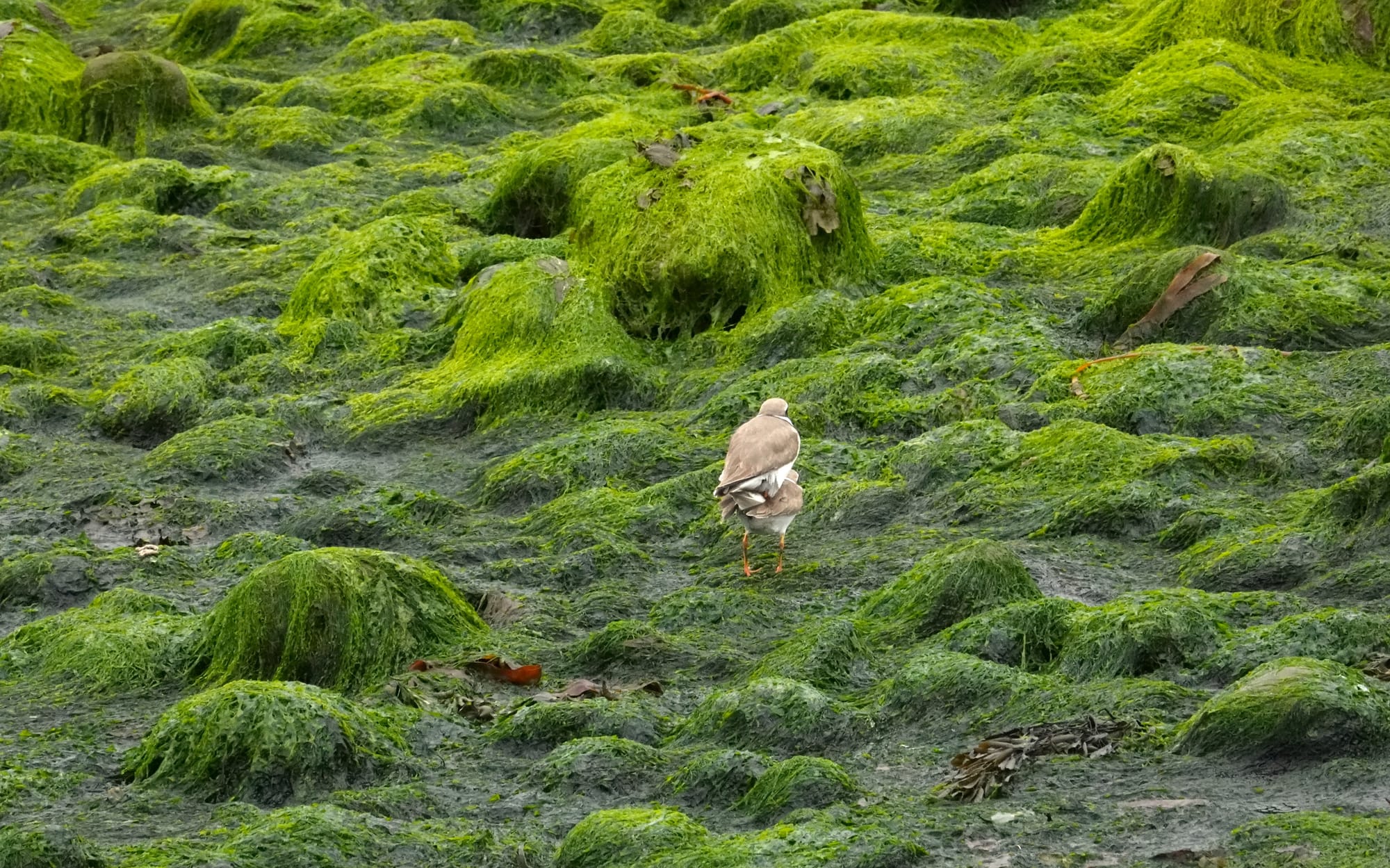
Bass Rock
We had planned our boat trip to Bass Rock to witness the breeding season for 75,000 pairs of Northern Gannets. Another hiccup occurred. We had gotten the disappointing notification the day before that our boat trip would be cancelled due to predicted strong currents that made sailing unsafe.
David Attenborough has called Bass Rock one of the natural wonders of the world. We would have liked to join the landing trip if the trip wasn't full. During the landing trip, you can get observe the Gannets upclose and watch them divebomb
Sighting Bass Rock without a trip
We settled for observing these birds from mainland. The mostly white large rock (the white is from excessive bird poop) can be seen from many points in North Berwick.
Northern Gannets can be found flying above the seas in North Berwick. We first went to Sea Cliffs beach (5GBP Parking fee paid by card) which has a pretty good view of Bass Rock and we could see the Northern Gannets dive bombing far away. Sea cliffs beach is a nice quiet beach with some cool red rocks.
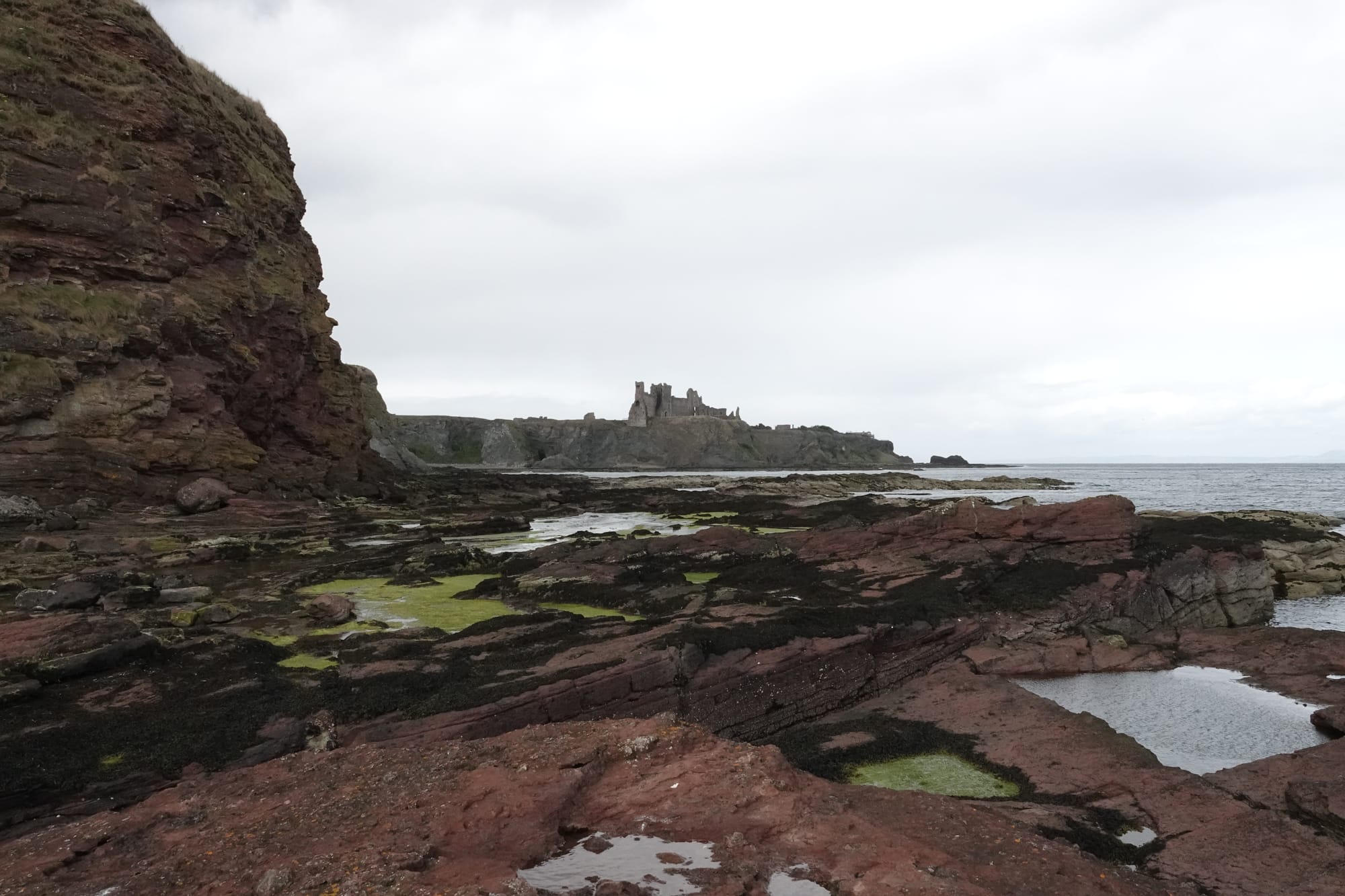
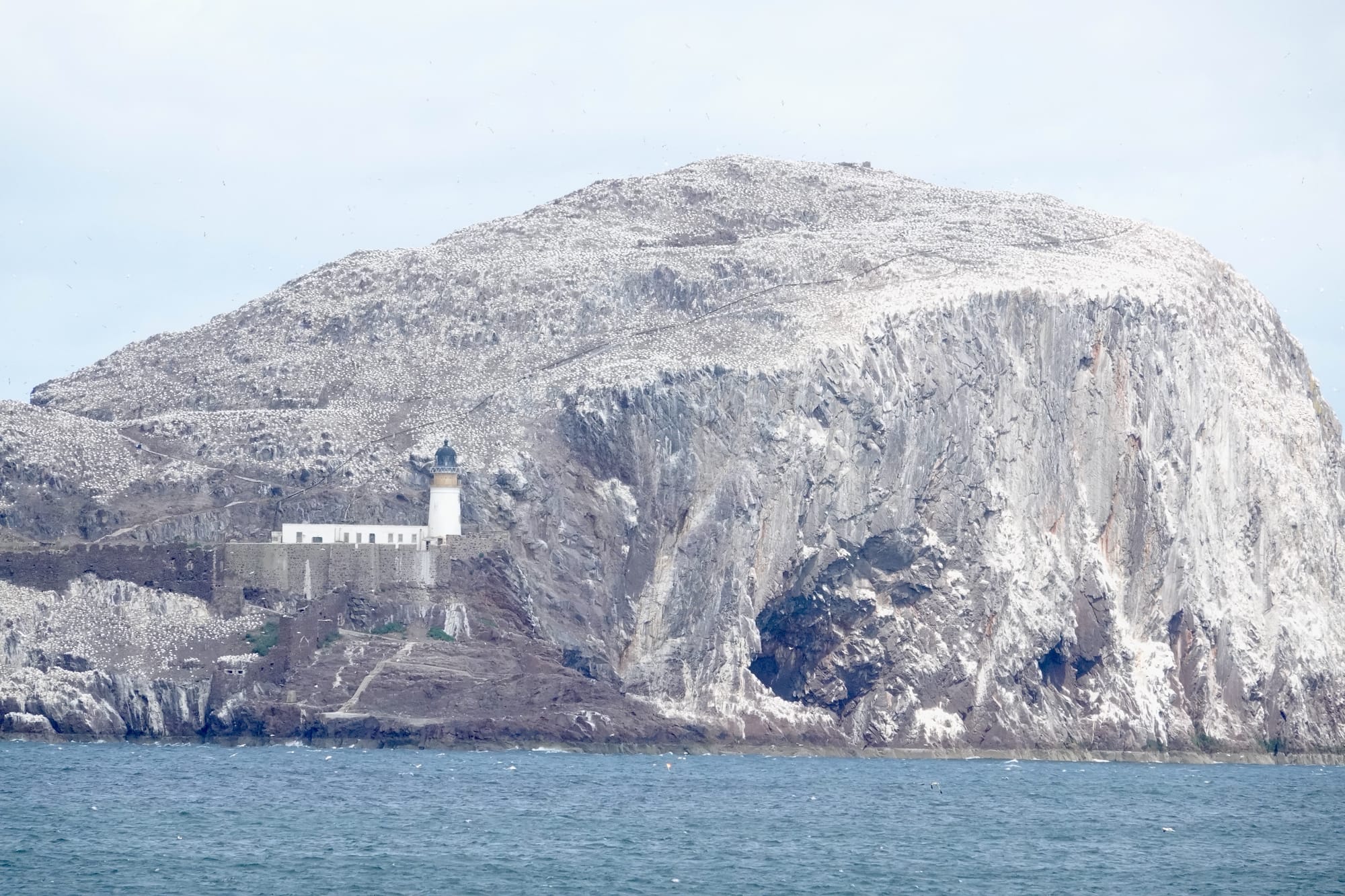
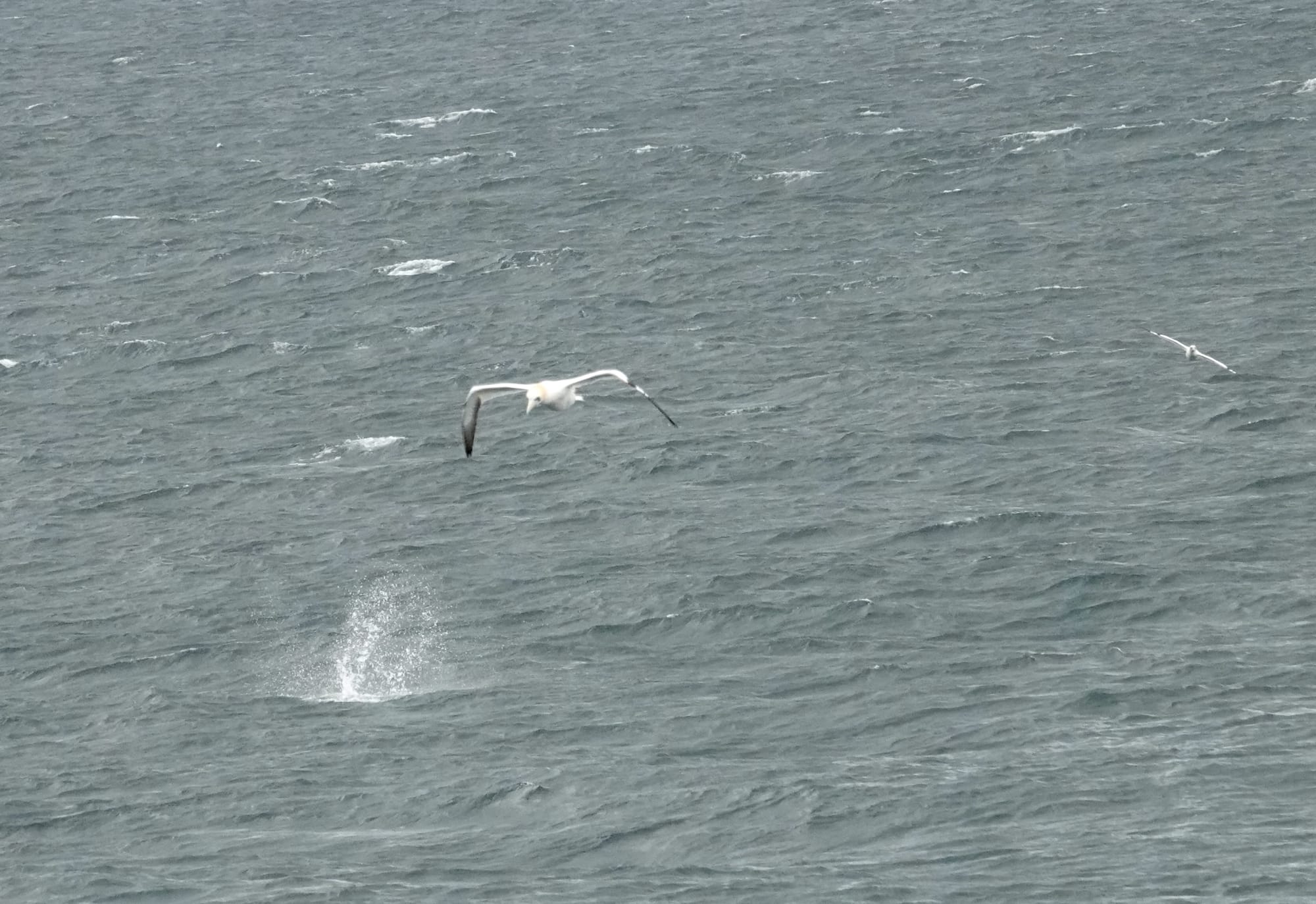
Views from Seacliffs beach. Gannets divebombing into the sea can be seen from afar at Seacliffs beach
The best view of the Northern Gannets from mainland turned out to be the free lookout point from sea birds center. From there, the North Gannets were the closest to us. At one point, the gannets were just a few meters right above our heads and we could see them closely without lens.
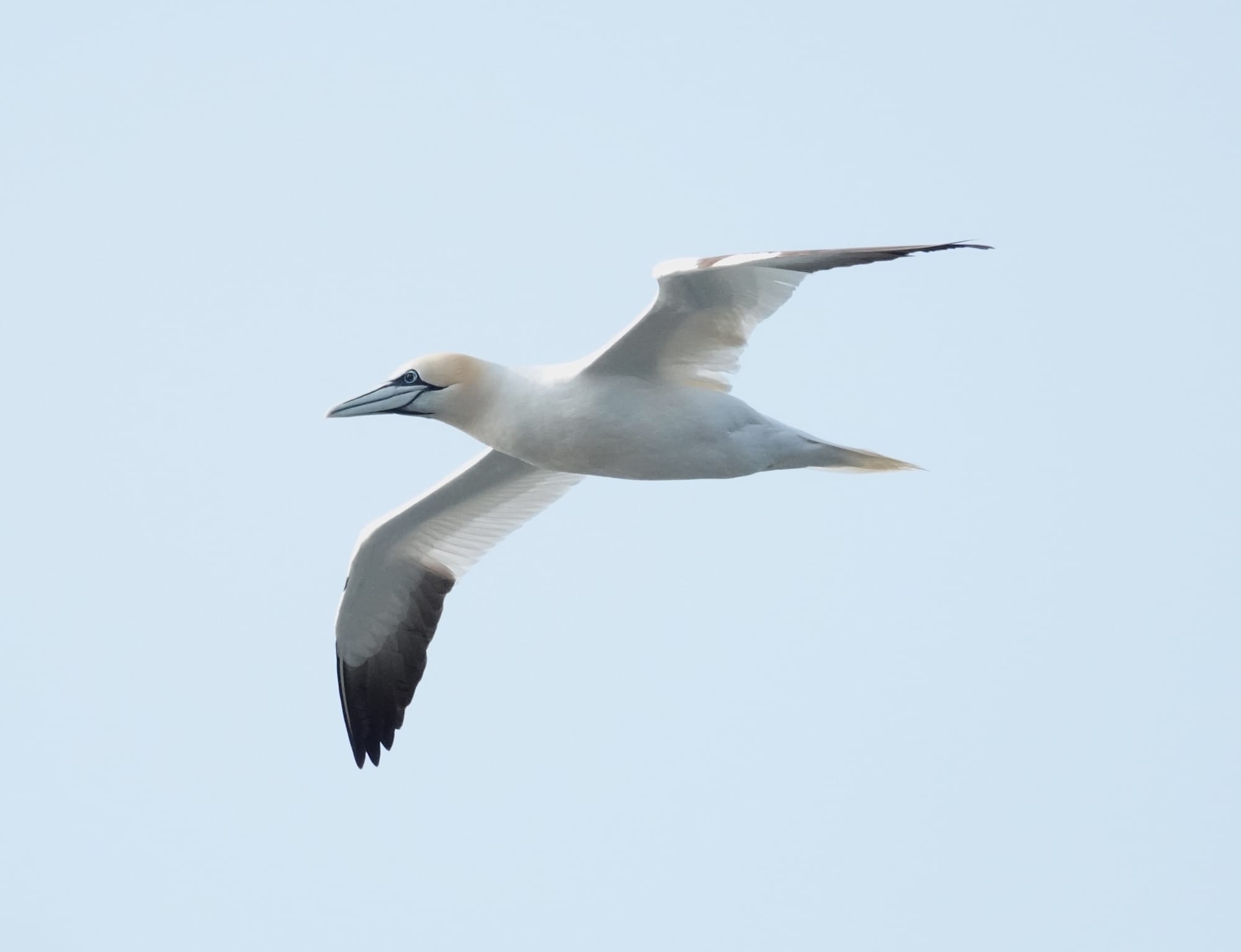
Most of the time, the gannets were divebombing some distance away. They tend to dive-bomb one after another at the same spot. After spotting one gannet strike at a particular spot, we positioned our camera focus to that spot, expecting the other gannets to strike at that same spot after the first.
Bird flu has ravaged several of these isles, including Bass Rock. Researchers found that birds who have recovered from bird flu have their irises change color. https://www.bbc.com/news/uk-scotland-edinburgh-east-fife-65961988
Our seafari adventure in Scotland was a refreshing mix of fresh salty air, stunning scenery, and the quiet joy of watching seabirds go about their day. From the clifftop views to the bustling bird colonies, it was a chance to slow down and appreciate life in its rawest form—wind-whipped, wild, and wonderfully unfiltered. Scotland didn’t just offer us seabirds; it offered perspective. And that’s what we’ll carry with us, long after the cries of the colony fade behind the waves.
